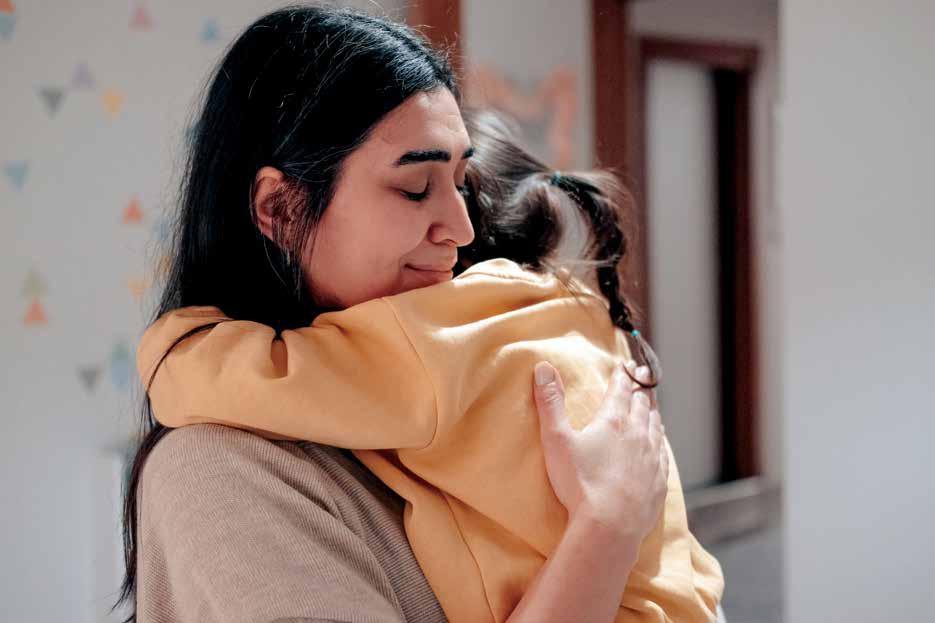
























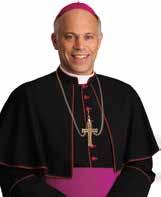
As we approach the end of our Lenten spiritual journey and look ahead to Palm Sunday and Easter, it may be helpful for us to reflect on a heartbreaking encounter that is shared in the Gospel of St. Luke.
“Just as he was saying this, the cock crowed, and the Lord turned and looked at Peter; and Peter remembered the word of the Lord, how He had said to him, ‘Before the cock crows today, you will deny me three times.’ He went out and began to weep bitterly” (Lk 22:60-62).
St. Luke is the only one of the four Gospel writers to include this detail in his account of our Lord’s Passion, and a very striking detail it is. You can imagine the scene: Jesus’ face broken and bloodied after his scourging, his beating and receiving the crown of thorns; Peter, overwhelmed with shame at ha ving betrayed Jesus, sees this face of his friend and Master looking at him, suffering the unspeakable pain and humiliation of crucifixion out of love for him and the world.
The word “look” here does carry this meaning of looking intently at, or, more literally, looking straight at someone. We can sense how that look of Jesus pierced Peter straight through to his soul. It was an intense moment of self-revelation, when Peter’s denial of knowing Jesus, which his conscience had suppressed, came rushing to the surface of his consciousness. In Jesus’ face Peter saw the evil and cowardice of his betrayal. And so he wept.
But weeping is not the only thing that he did. That experience brought him low; it was humiliating for him. But he did not stay there. Despite his moment of weakness and fear, Peter had an intense and genuine love of his Lord. And so he repented, accepted his Lord’s forgiveness, and so became the principal pillar of the Church which the Lord came to build, even to the point of repeating the pattern of His death in his own death, being crucified like his Lord.
This is the paradigm for every believer: repeating the pattern of the Lord in the believer’s own life, in some way or another.
Jesus was the first one to be brought low: in his own case, freely choosing to do so, allowing Himself to be humiliated by the creatures which He created. This is what St. Paul tells us in his letter to the Philippians, that Christ Jesus “emptied Himself,” He “took the form of a slave” by assuming our human flesh and freely chose the shameful death of the cross. It was through this crucible of suffering and death that God His Father “greatly exalted Him and bestowed on Him the name which is above every name.”
It is for this reason that St. Paul proclaims that all of creation, of both the spiritual and temporal realms, are to bow at the name of Jesus. We lower ourselves to the one who lowered Himself for us. This is where the custom of bowing our head at the name of Jesus comes from, a gentle reminder of what our Savior did for us and the dominion He has over our lives.
But as with St. Peter, so our Lord’s example sets the pattern for every one of His followers. No, not in the literal sense as happened with Peter, but each one in his or her own way, according to their respective vocation and circumstances of life. Same thing with that look of Jesus: He is casting that same, intense look at each of us.
Do we look back, look Him in the face, allow Him to pierce our soul and lay bare what we have buried deep within our conscience? It is our fears and insecurities that keep us from allowing Him to do so, for it is painful to be brought low in such a moment of selfrevelation. While He respects our free will, He is always ready to exalt those who lower themselves before Him. This is the only way to achieve greatness in God’s sight, a path that Jesus Himself blazed for us.
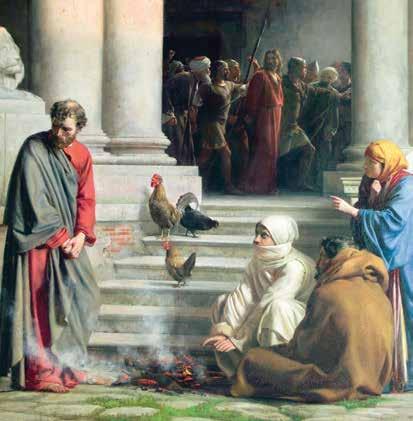
Just as he was saying this, the cock
crowed,
and the Lord turned and looked
at Peter;
and Peter remembered the word of the Lord, how He had said to him, ‘Before the cock crows today, you will deny me three times.’ He went out and began to weep bitterly”
LK 22:60-62
With the celebration of Palm Sunday, we begin the annual observances of Holy Week, the culmination of Lent and the most sacred days in the Church’s calendar. We reach the culmination of the Easter season which more than any is the indicated time for such introspection.
Let us avail ourselves of the grace of these days: through our prayer, our penance, participation in the Church’s holy rites and especially in sacramental confession, that we may repeat the pattern of our Lord’s work of salvation for us, and so proclaim not just with words but above all with the example of a holy life: “Jesus Christ is Lord, to the glory of God the Father.”
Excerpted from Archbishop Cordileone’s homily at the Cathedral of St. Mary of the Assumption on Palm Sunday in 2024.
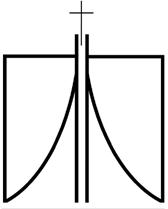
youtube.com/ArchdioceseofSanFrancisco (with Archbishop Cordileone presiding) or youtube.com/CathedralofStMaryoftheAssumption (with Cathedral parish priest presiding) The Chrism Mass Thursday, April 10
5:00 p.m. Mass
Archbishop Cordileone, Principal Celebrant
Annual Archdiocesan Celebration of Renewal of Priestly Ministry by the Clergy, Blessing of Oils of Catechumens, Sick, and Sacred Chrism by the Archbishop Palm Sunday of the Passion of the Lord
Saturday and Sunday, April 12 and 13
Regular Weekend Schedule of Masses
Saturday, April 12, 5:30 p.m. Vigil Mass with Cathedral Choir School Sunday, April 13
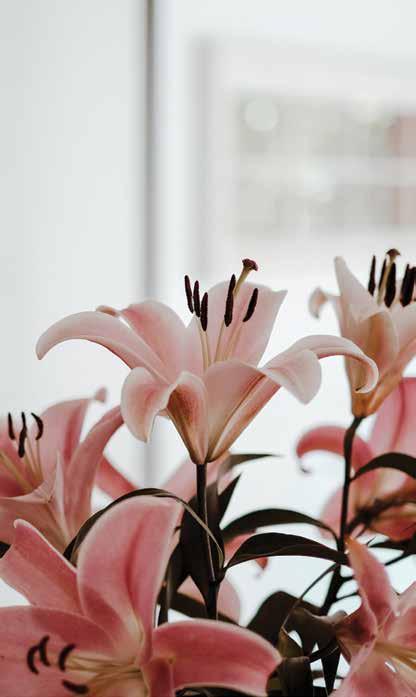
7:30 a.m.; 9:00 a.m. Gregorian Chant
11:00 a.m. Mass with Cathedral Choir
Archbishop Cordileone, Principal Celebrant
1:00 p.m. en Español, 4:00 p.m. Palm Sunday Concert Featuring Heegeun Song, Violin, with Jin Kyung Lim, Piano Thursday of the Lord’s Supper (Holy Thursday) Thursday, April 17
Lent ends at Sundown on Holy Thursday, and the Celebration of The Paschal Triduum begins (NO Confessions and NO 7:30 a.m. or 12:10 p.m. Masses Today) 7:30 p.m.
Mass of the Lord’s Supper
Archbishop Cordileone, Principal Celebrant
Followed by Vigil and Adoration of the Blessed Sacrament in the Event Center c oncluding with 10pm night prayer
Friday of the Passion of the Lord (Good Friday) Friday, April 18
(NO 7:30 a.m. or 12:10 p.m. Masses Today) 11:30 a.m. – 12:30 p.m. Confessions
1:00 p.m.
Stations of the Cross
2:00 p.m. - 3:00 p.m. Music in the Cathedral 3:00 p.m.
Liturgy of the Passion and Death of the Lord Archbishop Cordileone, Celebrant Liturgy of the Word, the Adoration of the Cross and Holy Communion Holy Saturday Saturday, April 19
(NO Confessions and NO 8:00 a.m. or 5:30 p.m. Masses Today) 9:00 p.m.
The Easter Vigil in the Holy Night Archbishop Cordileone, Principal Celebrant Blessing of the New Fire and Paschal Candle, Liturgy of the Word, and Celebration of the Eucharist.
Easter Sunday of the Resurrection of the Lord Sunday, April 20
Regular Sunday Schedule of Masses 9:00 a.m. Gregorian Chant
11:00 a.m. Mass with Cathedral Choirs and Brass Esemble
1:00 p.m. en Español, 4:00 pm Easter Concert 4:00 pm Easter Concert Featuring Michal Szostak (Poland), Organ
Excerpted with permission and available for purchase from

https://ignatius.com/the-ultimate-catholic-quiz-ucqp/
There are no trick questions, but there are questions that will trip you up if you fail to read carefully. An answer is counted as wrong if any part of it — such as a date or name — is wrong. Your goal is not to find the answer that is least wrong, but the one answer that is wholly right, which may be “none of the above.” On average, most informed Catholics score 50%. How well did you do?
1. Before the Fall, Adam and Eve:
a. enjoyed freedom from all bodily suffering but not from emotional suffering.
b. enjoyed immortality, a consequence of which was that they could not sin.
c. did not understand that God was their Creator; they learned this only after first sinning.
d. had a full understanding of their premortal lives in heaven.
e. none of the above
2. What are the four marks of the Church?
a. St. Mark the Martyr, Pope St. Mark, St. Mark Chrysostom, and St. Mark the Evangelist
b. holiness, catholicity, universality and apostolicity
c. sacraments, sacramentals, pious devotions and rosaries
d. pope, cardinal, bishop and priest
e. none of the above
3. In terms of religion, what is a mystery?
a. a story with an unexpected ending
b. something contrary to reason but not contrary to faith

c. a religious truth that we cannot know everything about
d. There are no mysteries in the Catholic faith since everything can be understood from the Catechism of the Catholic Church.
e. none of the above
4. Who designed the dome of the cathedral of Florence?
a. Michelangelo Buonarroti
b. Giovanni Lorenzo Bernini
c. Filippo Brunelleschi
d. Lorenzo Ghiberti
e. none of the above
5. How do we know which books belong in the Bible?
a. by referring to the table of contents
b. The books demonstrate their canonicity through their evident lofty style.
c. through ancient decrees of the Catholic Church
d. by the common consent of all major Christian bodies
e. none of the above
Answer highlights can be found on page 38

OPEN THIS QR CODE FOR COMPREHENSIVE ANSWERS or visit https://sfarchdiocese. org/april-2025-catholic-quiz/

1040

Alameda de las Pulgas, Belmont, CA 94402 • (650) 593-6157 / www.ihmbelmont.org
2025 HOLY WEEK SCHEDULE
Palm Sunday - April 13
Saturday 5:00 PM Vigil Mass
Sunday Masses 7:30 AM, 9:30 AM & 11:30 AM
Traditional Latin Mass 4:00 PM
2025 PASCHAL TRIDUUM
Holy Thursday - April 17 Mass of the Lord’s Supper - 7:00 PM Adoration until 10:00 PM (No morning Mass)

Good Friday - April 18
Stations of the Cross at Noon Celebration of the Lord’s Passion at 1:30 PM Confessions folliowing until 4:00pm (No morning Mass)
Holy Saturday - April 19
Easter Vigil Mass—8:00 PM Confessions 3:00 PM—4:00 PM (No morning Mass)
Easter Sunday—April 20
The Resurrection of the Lord Masses 7:30 AM, 9:30 AM & 11:30 AM
Traditional Latin Mass 4:00 PM

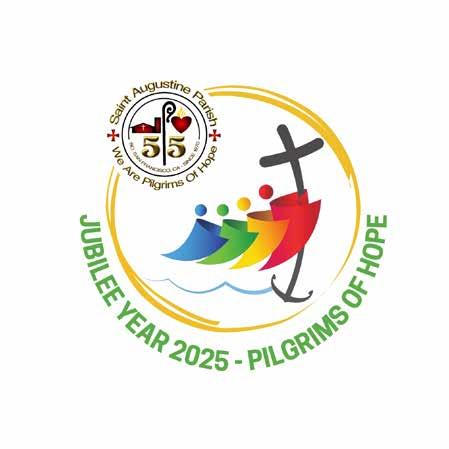
Seventeenth Avenue and Vincente Street The Parkside District in San Francisco Live Church Broadcast: www. stcecilia.com
Palm Sunday of the Passion of the Lord, April 13th Palms will be blessed at the beginning of every Mass. Saturday Vigil – 5:00 PM
Sunday Masses – 7:30 AM, 9:30 AM, and *11:30 AM *Solemn Procession at the 11:30 AM Mass
Holy Monday, April 14th 6:00 – 7:00 PM – Lenten Penitential Service with Individual Confessions
Holy Thursday, April 17th 9:00 AM – Morning Prayer 7:30 PM – Mass of the Lord’s Supper and 9:00 PM Eucharistic Exposition until 11:00 PM (Church remains open from 9:00 AM – 11:00 PM)
Good Friday, April 18th
9:00 AM – Morning Prayer 12:00 PM – Stations of the Cross, 7 Last Words, Good Friday Liturgy, and Divine Mercy Novena (Church remains open from 9:00 AM – 4:00 PM)
Holy Saturday, April 19th 9:00 AM – Morning Prayer 8:00 PM – Easter Vigil (Church closes after the morning prayer and reopens at 7:00 PM)
Easter Sunday, April 20th Masses at 7:30 AM, 9:30 AM and 11:30 AM

1425 Bay Road, East Palo alto
APRIL 12 & 13 PALM SUNDAY - Blessing and Distribution of Palms
Saturday: 4:30PM; Sunday: 7:30AM, 9AM*, 11AM, 12:30PM, 5:30PM
APRIL 14 HOLY MONDAY - 9AM* Holy Mass
APRIL 15 HOLY TUESDAY - 9AM* Holy Mass
APRIL 16 HOLY WEDNESDAY - 9AM* Holy Mass
APRIL 17 HOLY THURSDAY 9AM* Community Morning Prayer
10AM-11:30AM Sacred Silence - Private Prayers and Devotion 7PM* Mass of the Lord’s Supper; Adoration until 12 Midnight
APRIL 18 GOOD FRIDAY
9AM* Community Morning Prayer
10AM-11:30AM Sacred Silence - Private Prayers and Devotion
12 Noon* Live Stations of the Cross 1PM* Seven Last Words
2:30PM* Celebration of the Passion of the Lord Divine Mercy Novena 7PM Stations of the Cross
APRIL 19 HOLY SATURDAY 9AM* Community Morning Prayer
10AM-11:30AM Sacred Silence - Private Prayers and Devotion 3PM* Divine Mercy Novena 8PM* Easter Vigil Mass
APRIL 20 EASTER SUNDAY
5AM* Salubong
7:30AM, 9AM*, 11AM, 12:30PM (NO 5:30PM MASS) 1:30*PM Divine Mercy Novena
*Livestream: https://www.youtube.com/c/staugustineSSF https://www.facebook.com/StAugustineSSF
Ph. (650) 322-2152; Fax (650) 322-7319 • Email: sfofassisi@sbcglobal.net
Holy Thursday, April 17
Mass of the Lord’s Supper Bi-Lingual 7:00PM Adoration until 12:00 Midnight
Good Friday, April 18
English 12:00 PM
Stations, “Seven Last Words” Meditations English 2:00PM
Liturgy of the Lord’s Passion Bi-lingual 4:30PM Live Stations
Live Way of the Cross re-enacted from Jack Farrell Park to the Church
Spanish 6:00PM Liturgy of the Lord’s Passion
Holy Saturday, April 19
Confessions 10:30AM to 12:00PM and 3:30 to 5:00PM Bi-lingual 8:30PM Easter Vigil
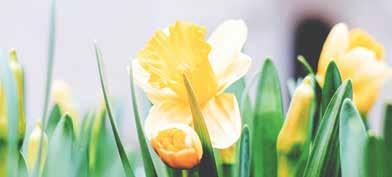
Easter Sunday, April 20
7:30AM English 9:30AM Spanish 12:30PM Bi-Lingual followed by Easter egg hunt.

BY CHRISTINA GRAY Lead writer, Catholic San Francisco grayc@sfarch.org
PHOTOS BY DENNIS CALLAHAN
On May 17, Archbishop Salvatore J. Cordileone will pray over seven men as they become permanent deacons at their ordination at St. Mary’s Cathedral. According to Deacon Fred Totah, who directs the office of deacon formation, the Archbishop will, as part of the ordination rite, ask that “every Gospel virtue may abound” in the new deacons, who are called not only to be hearers of the Gospel, but to be the face of Christ, the servant. Diaconate ordination is the culmination of a five-year formation process for the candidates, four of whom are single and three of whom are married, according to Deacon Totah. He said his goal during formation is to instill in candidates “a deeper understanding of their identity as a deacon.” He shares

that solemn duty with Deacon Art Sanchez, director of permanent diaconate formation.
“Because deacons proclaim by their very lives the Church’s call to serve the needs of others, we can say one is a deacon, as opposed to one ‘doing diaconal activities,’” Deacon Totah said. “Ordination bestows a permanent character on a person. Once ordained, the deacon is always a deacon, regardless of where he is or what he is doing.”
The ministry of the permanent diaconate was restored following Vatican II, he said. A deacon is an ordained minister of the Church –neither a layman nor a priest, but a cleric ordained for the service of God’s people in communion with the bishop and his body of priests. He works collaboratively with bishops, priests and existing staff members of a parish or institution. They work together to build up the body of Christ.
A deacon candidate’s first year is called his “aspirancy,” said Deacon Totah. It is followed by four years
MARK KRONCKE
A native of Marin County, Mark Kroncke has been a member of St. Raphael parish since 1974. He brings years of experience in various settings to his ministry, including youth and adult education, catechesis, retreat work, social justice and spiritual formation. He is active at St. Raphael as a sacristan and reader and chairs the Evangelization and Discipleship committees. He also assists in the RCIA program at St. Dominic’s church.
of study through the Diaconate Formation Program at St. Patrick’s Seminary and University in Menlo Park. Classes include, but are not limited to, study of Scripture, liturgy, homiletics, catechetics, moral and systematic theology, canon law, Church history and pastoral practice. Days of recollection and yearly retreats are also important stages of the formation process.
Candidates who are married are encouraged to bring their spouses to the classes.
“Wives are valued partners both during the formation program and after ordination,” he said.
Mark Kroncke
Daniel Roddick
Brother Xristopher Compagno, Obl.OSB.Cam
Earl Michael David Gabriel
Marvin Sanchez
Michael B. Smith
Marc Aquino
As a professed secular Franciscan, Kroncke brings his Franciscan charism into his ministry and is currently active in leadership for his fraternity and region. He is also in the Knights of Columbus. Kroncke holds a master of divinity degree and a master of arts in humanities, as well as numerous certifications in theology and spirituality. As a certified spiritual director, he enjoys journeying with people in their faith. He looks forward to continuing to serve the people of God.
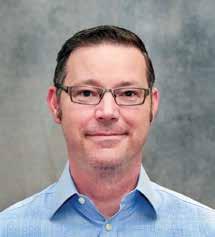
Daniel Roddick was born in San Francisco and raised in the Catholic faith at St. Philip the Apostle Parish in Noe Valley. He earned a bachelor’s degree in history with a minor in ethnic studies from UC San Diego and a master’s degree in college administration and counseling from UCLA. He worked in the financial aid industry for 17 years, most notably as the director of financial aid for the UC Berkeley Haas School of Business. In a career change, Roddick began working in his father’s law practice, which focuses on estate planning with wills, trusts and probate. He subsequently earned a law degree from Golden Gate University in 2024.
Just before the COVID pandemic, the three Catholic parishes of Noe Valley (St. Philip’s, St. Paul’s and St. James) clustered due to projected priest shortages. Partially inspired by this change, Roddick has pursed the permanent diaconate to help the community maintain uninterrupted opportunities to worship God. He desires to help people seek the sacred, to know, love and serve the Lord. Roddick’s other interests include gardening, bird keeping, genealogy and espresso.
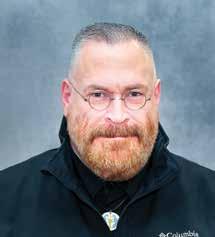
Brother Xristopher Compagno is an Oblate brother of the Camaldolese Benedictine hermits in the New Camaldoli Hermitage in Big Sur and Incarnation Monastery in Berkeley.
A cradle Catholic, Compagno served as an altar boy in his childhood parish, San Carlos Borromeo Cathedral in Monterey. A love for the arts, fostered by his mother, a writer, and his father, a musician, paved the way for a career in the music industry. After majoring in literature and humanities and studying Japanese at San Francisco State and UC Berkeley, Compagno began working for a major record label.
The Holy Spirit led him to the hermitage and eventually to St. Dominic Parish in San Francisco. Here he celebrates devotions to St. Jude the Apostle, the Blessed Mother, St. Francis of Assisi and St. Térèse of Lisieux. A lover of animals and nature, Compagno can often be found praying a rosary as he walks the beaches at Fort Point in San Francisco’s Presidio. Upon ordination, he will continue his service at St. Monica/St. Thomas the Apostle Parish and his ongoing work in grief ministry at St. Mary’s Cathedral.
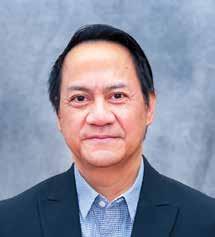
EARL MICHAEL DAVID GABRIEL
Earl Michael David Gabriel was born in Manila, Philippines, where he studied computer science before immigrating to the U.S. In 1997, he joined the U.S. Navy. He was stationed in San Diego and received promotions, honors and citations from the fleet command. As a Catholic lay minister, he volunteered with the Fleet Chaplain’s office, served at Mass and did community service in various towns around the world. In 2002, before his tour of duty ended, he was stationed on the Italian island of Santo Stefano and served Masses at the local village church.
He received a scholarship and in 2005 earned a degree in philosophy at St. John’s University in New York. In 2011, he earned a psychology degree from Skyline College in San Bruno. He is currently working for the National Park Service as a contract specialist and contracting officer.
Gabriel’s vocation took root in his devotion to Our Mother of Perpetual Help in the Philippines, where he took to heart the Redemptorist motto: “With God there is plentiful redemption,” and their mission to live life in service of others. Gabriel is a parishioner and liturgy coordinator at Good Shepherd Parish in Pacifica. He also serves at novena Masses at Holy Angels Church in Colma. ›
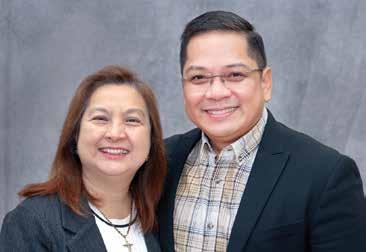
MARVIN SANCHEZ
Born in the Philippines, Marvin Sanchez felt a calling to the priesthood when he was an altar server in his homeland. However, God had different plans for him. Sanchez entered the vocation of marriage with his beloved wife, Ana, with whom he has shared 30 wonderful years. Their union has been blessed with five wonderful children: Melvin Angelo, Aaron Matthew, Marlee Angeli, Angela Marielle and Marianne Alyssa. Adding to their joy, they have a precious granddaughter, Jhene Angelique.
Since 2002, the Sanchezes have been deeply committed to the Couples for Christ family ministry, dedicating their time and energy to fostering strong, faith-based relationships. In 2007, following their migration from the Philippines, they became devoted parishioners of St. Gregory’s Church in San Mateo. There, Sanchez actively serves as an acolyte, while both he and his wife serve as lectors and extraordinary ministers of Holy Communion. Sanchez believes one of the reasons God led him to the U.S. was to continue his service at the altar by entering diaconate formation — a ministry not yet practiced in the Philippines. He combines his passion for serving God with his expertise in information technology. He is the director for IT & parish services for the Archdiocese of San Francisco.
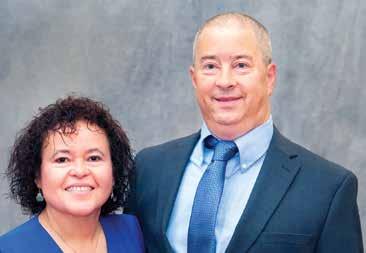
Michael Bernard Smith is a native San Franciscan born from first-generation immigrant parents of German, Austrian and Chinese descent. Smith is a licensed mechanical engineer who has spent his entire career with San Francisco’s Department of Public Works, where he focuses on improving its highpressure firefighting system.
Smith said the greatest gift he ever received was his mother baptizing and raising him and his siblings as Catholics, setting their futures on solid ground. He had for many years considered serving the Church but did not know how besides lectoring and serving as a sacristan. Finally, at a Mass, the “come follow me” call was too difficult not to respond to, and he applied to the diaconate formation program.
Smith married Silvia Maritza at St. Veronica Parish over 34 years ago. The pair met at San Francisco State University as mechanical engineering students. They have two grown children, Christopher Matthew and Jennifer Marie. The Smiths belong to St. Robert Parish in San Bruno. Over the years, the family has opened their house to more than a dozen rescue cats.
Smith’s hobbies include spending time with the family train spotting; visiting national parks; volunteering at Camp Mendocino, a residential summer camp for the city’s underserved youth; and designing and building steam locomotives.

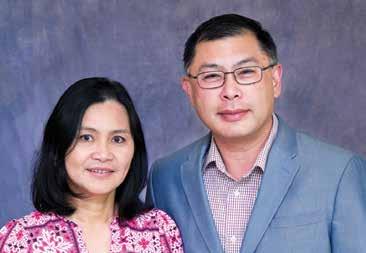
Marc Aquino’s journey to the diaconate follows a nearly 25-year career in the biopharmaceutical industry. It evolved from curiosity to a committed desire to serve as a deacon. Aquino and his wife Deanna have been married for 25 years, raising their two children, now young adults, in the Catholic faith. Aquino is active at his home parish of St. Charles in San Carlos. He has also served St. Matthias and St. Augustine parishes. He is on the board of Catholic Charities, serving San Francisco, San Mateo and Marin counties. Deanna Aquino works in IT risk and compliance and has supported Marc throughout this diaconate journey. Together, they have grown in faith and feel blessed by the support from their family and church community. They are looking forward to serving God and serving others through diaconate ministry. ■
Did you miss Catholic San Francisco’s February story on the history and functions of the permanent diaconate? Read it here: sfarchdiocese.org/catholic-sf/ Funds raised in the annual AAA campaign help support diaconate ministry and a variety of other vital ministries. Make an online gift today at sfarchdiocese.org/aaa.

SCAN FOR MORE AAA
INFORMATION, or contact your parish or the Office of Mission Advancement at (415) 614-5580 or email: development@sfarch.org
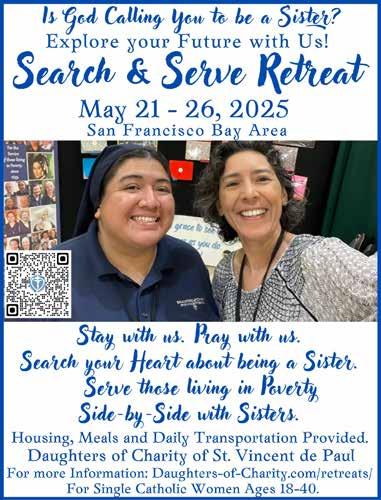
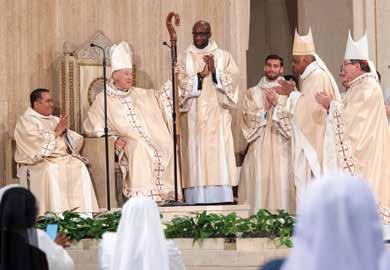
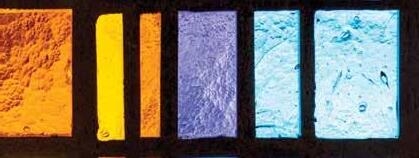
“The people of the Archdiocese of San Francisco, my brother priests, and our deacons and dedicated religious join me in congratulating Cardinal Robert McElroy on his appointment to our nation’s capital. His pastoral experience, profound understanding of the role of the Church in the civic community, and commitment to dialogue will be a blessing both to the Church of Washington D.C. and to our country. Our prayers accompany him!”
- Archbishop Salvatore J. Cordileone


BY FATHER BOBBY BARBATO, OFM CAP.
Aman nearly blind, for whom the light of the sun and even of fire causes pain, sings the praises of the sun. “Praised by You, my Lord, with all your creatures, especially Sir Brother Sun, who is the day and through whom You give us light, and he is beautiful and radiant with great splendor.” He tells us why he sings this: because the sun “bears witness to You, O Lord.” These words were composed and sung by St. Francis of Assisi 800 years ago, in 1225, and still can give us insight into our relationship with God, one another and all of creation.
“The Canticle of Brother Sun,” which is the name St. Francis gave to his song (some call it “The Canticle of the Creatures” or other titles) is an important spiritual work as well as a turning point in European literature, one of the first works written in the language that would become Italian (as opposed to Latin, the literary language of Francis’ day). This poem has been admired and adapted many times over the last eight centuries. Dante cited it, Franz Liszt wrote several musical pieces based on it and of course in our own day Pope Francis used it as the basis of his encyclical on the environment, called “Laudato si,” after a recurring phrase in the Canticle.
What does an 800-year-old poem, written in Umbrian, the language of Assisi in the 13th century, have to tell us now? What message does the Lord still want us to hear? Pope Francis says: “Francis (of Assisi) was a mystic and a pilgrim who lived in simplicity and in wonderful harmony with God, with others, with nature and with himself. He shows us just how inseparable the bond is between concern for nature, justice for the poor, commitment to society and interior peace.” (“Laudato Si,” 10)
To understand St. Francis’ deep spiritual vision found in his Canticle, it is essential to know when he composed this beautiful work. He did not write these words when he was a young man, traipsing the hills of his native Umbria and dancing amid the
Francis (of Assisi) was a mystic and a pilgrim who lived in simplicity and in wonderful harmony with God, with others, with nature and with himself. He shows us just how inseparable the bond is between concern for nature, justice for the poor, commitment to society and interior peace.”
POPE FRANCIS
creatures. As noted, he wrote this Canticle in 1225, near the end of his life. It was after his Rule of the Friars Minor had been approved, and his Christmas at Greccio had been celebrated with the live nativity. It was also after he had received the stigmata, the very wounds of Christ, on Mount Laverna.
Despite all this, Francis of Assisi in the spring of 1225 faced many challenges, both inner and outer. He was discouraged by some of the developments in his order and by the political violence in his world; he was also afflicted with a disease that made his eyes so sensitive that mere exposure to daylight or firelight caused him intense pain. In the midst of all this, Francis was tempted to feel sorry for himself and give up his faith in the goodness of God.
Francis reached out to God in prayer and asked for strength. In his heart he heard the voice of God tell him that Jesus was with him, and the Lord could transform even his pain and suffering into the beginning of eternal life. Francis responded with a renewed trust in God and a deeper appreciation of the gift of creation, which he felt he and many people had taken for granted. He told his brothers, therefore, that he wanted to compose a new song in praise of God and thanksgiving for all creation.
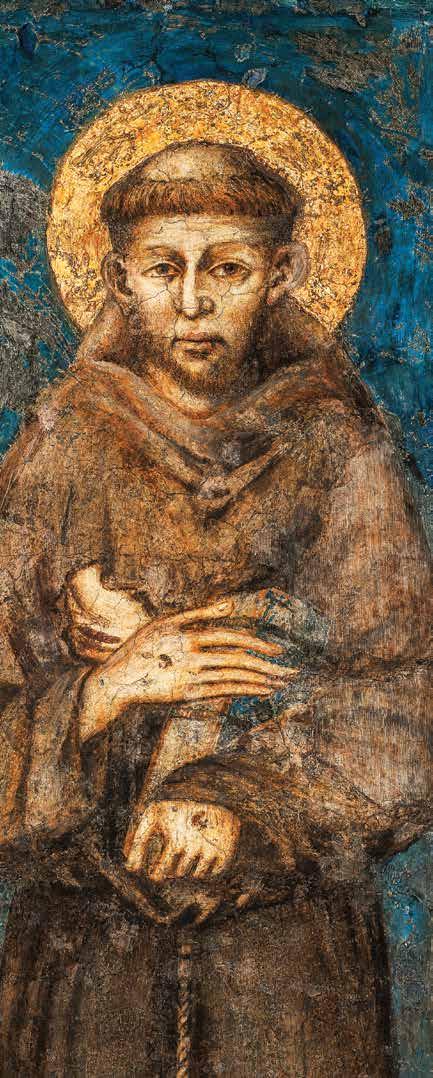
Francis wrote this Canticle as a lyrical reflection on the beauty of God mirrored in his creatures, yet it was also a call to his brothers and sisters. He wanted his friars to sing this Canticle in the public squares and preach to the people the need for penance, that is, the need to seek God above all things and in all things. Francis wanted to share with others the fruits of his own spiritual journey
Francis had learned to focus on this question in his prayer before the Lord: “Who are you and who am I?” His Canticle begins with a stark reminder who God is: the “Most High, All-powerful, good Lord,” the only one to whom by nature “all praises, glory, honor and blessing are due.” And who are we? We are creatures, who in ourselves are not “worthy to mention Your name.”
However, Francis knows that we are made to mention that name, to learn how to give God praise and glory. This is what the Poverello does in his Canticle by proclaiming God’s praises with and through all His creatures (and by creatures he does not mean just living beings, but every aspect of creation). Francis’ biographers all tell us that the saint began to call each creature “brother” or “sister.” He recognized that everything is made by the same Creator, the same Father of us all.
Francis begins the praises with “Sir Brother Sun.” Francis felt the sun was the first and best indicator of the beauty and power of God. He says that Brother Sun, in being “beautiful and radiant with great splendor,” bears witness to God the most high in a special way. In this way Francis reminds us that the reason we can praise God at all with all His creatures is because of Jesus Christ, the Word made flesh who dwells among us.
Jesus proclaimed Himself “the Light of the World” (Jn 8:12) and light is a powerful way the Scriptures speak of God (“In Your light we see light” Ps 36-9). Each week we proclaim Jesus Christ as “light from light.” So, in beginning his praises of God with Brother Sun, Francis reminds us of the centrality of Jesus Christ, who as St. Paul reminds us is the “firstborn of all creation.” (cf. Col 1:15 ff.)
St. Bonaventure says that St. Francis looked at the beauty of all things and was led to admire and love their source, God who is beauty itself. Yet, each creature mirrors that beauty of God in its own way, and so Francis continues his praises. Sister Moon and the Stars are “clear and precious and beautiful.” Brother Wind is life-giving in the various aspects of the weather. Sister Water is “humble and precious and chaste.” Brother Fire, with whom we have a delicate ›
St. Francis of Assisi by Giovanni Cimabue.
BY ST. FRANCIS OF ASSISI
Most High, all-powerful, good Lord, Yours are the praises, the glory, and the honor, and all blessing, To You alone, Most High, do they belong, and no human is worthy to mention Your name. Praised be You, my Lord, with all Your creatures, especially Sir Brother Sun, Who is the day and through whom You give us light. And he is beautiful and radiant with great splendor; and bears a likeness of You, Most High One. Praised be You, my Lord, through Sister Moon and the stars, in heaven You formed them clear and precious and beautiful.
Praised be You, my Lord, through Brother Wind, and through the air, cloudy and serene, and every kind of weather, through whom You give sustenance to Your creatures. Praised be You, my Lord, through Sister Water, who is very useful and humble and precious and chaste. Praised be You, my Lord, through Brother Fire, through whom You light the night, and he is beautiful and playful and robust and strong. Praised be You, my Lord, through our Sister Mother Earth, who sustains and governs us, and who produces various fruit with colored flowers and herbs.
Praised be You, my Lord, through those who give pardon for Your love, and bear infirmity and tribulation. Blessed are those who endure in peace for by You, Most High, shall they be crowned.
Praised be You, my Lord, through our Sister Bodily Death, from whom no one living can escape. Woe to those who die in mortal sin. Blessed are those whom death will find in Your most holy will, for the second death shall do them no harm.
Praise and bless my Lord and give Him thanks and serve Him with great humility.

relationship, is “beautiful and playful and robust and strong.” Francis is particularly aware of the way God is praised through “Sister Mother Earth,” who not only supports life, but also provides us with the beauty of “various fruits and colored flowers and herbs.”
Each of these creatures praises God by being what it is made to be. But what about us, human beings? How do we learn to praise God? Francis finds his answer in the teachings and example of Jesus Christ. He says in the Canticle: “Praised be You, my Lord, through those who give pardon for Your love and bear infirmity and tribulation … who endure in peace.” We know he wrote these words specifically to bring reconciliation between the bishop and the mayor of Assisi, yet they are meant for each one of us. These words embody what Francis had discovered: even in his own trials and sufferings, and his own call to be reconciled, he was already praising God.
Because of this, St. Francis was able to say near the end of his life: “Welcome, Sister Death.” Yes, he called Death, who is usually depicted as a harrowing figure inspiring only fear, a creature of God and his sister. Embracing this sister meant making a choice: would he die in mortal sin, rejecting God and His holy will, or would he embrace all it meant to be a brother of Jesus Christ and so let death be a doorway into true and eternal life? We know what Francis chose, and we know that he implores each of us to choose the same: to find life through the cross and the true love of God found in the life, death and resurrection of Jesus Christ.
St. Francis ends his Canticle with the exhortation: “Praise and bless my Lord and give Him thanks and serve Him with great humility.” Here he sums up the entirety of our Christian faith in Jesus Christ. “Though he was in the form of God, He did not deem equality with God a thing to be clung to but emptied Himself.” (Phil 2:16) “The Canticle of Brother Sun” is a summary of St. Francis’ spiritual journey. Early in his life he wanted to become like God by seeking to amass possessions, power, prestige, popularity. He thought that to be like God was to climb higher and higher.
Through the Scriptures Jesus had taught him we can become like God not by exalting ourselves and clinging to things, but by emptying ourselves. This is why Francis called himself and his friars “lesser brothers.” His Canticle reminds us that none of us is worthy to mention God because of our knowledge, our charisma, our possessions or power, but with the rest of creation we are all able to thank Him and praise Him and serve Him with great humility.
St. Francis, pray for us, your sisters and brothers. ■
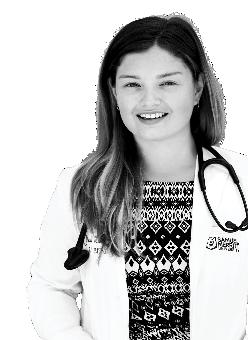
We are open for your spiritual renewal
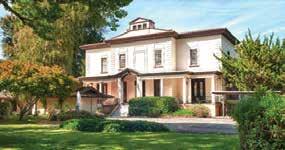
In a beautiful and peaceful park setting that includes many prayer and meditations spots*, we will host your group’s retreat or conference. You may also sign up for a private retreat. We especially invite you to attend one of our five-day silent retreats which are very powerful and reasonably priced.
For group reservations or a private retreat: call 650-325-5614 Or email jaynie@vallombrosa.org.
For our five-day retreat, call Deacon Dominick Peloso, (650) 269-6279
*The meditation spots available include: Lourdes, Fatima, St. Joseph, St. Mother Theresa, St. Francis, Spiritual Works, Corporal Works, Adoration Chapel, and (coming fall of 2024), a large (50’ x 12’) crucifixion scene by Timothy Schmaiz.
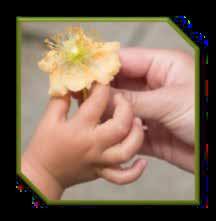
EPIPHANY CENTER’S 17TH ANNUAL
C ELEB RATING MO TH ERS LUNCH EON
Wednesday, May 7, 2025 St. Francis Yacht Club 11:30 a.m.
The Epiphany League and Luncheon Chairs Nan Bouton and Debi Curley invite you to share a heartwarming afternoon in honor of all the women who have shaped your life! This treasured event raises resources for San Francisco’s most vulnerable women, children, and families. You will hear firsthand how your generosity heals and transforms lives. The luncheon features an online Silent Auction , our Marketplace to purchase beautiful Orchid Gardens, locally sourced honey, and more!
Founded in 1852 as Mount St. Joseph -St. Elizabeth by the Daughters of Charity to care for San Francisco’s orphans, the agency continues today to support at -risk women and children, providing them with the support and confidence they need to heal and thrive. For more information and to purchase tickets, please call the event office at (415) 351 -4055 or online at Celebrating2025.givesmart.com.


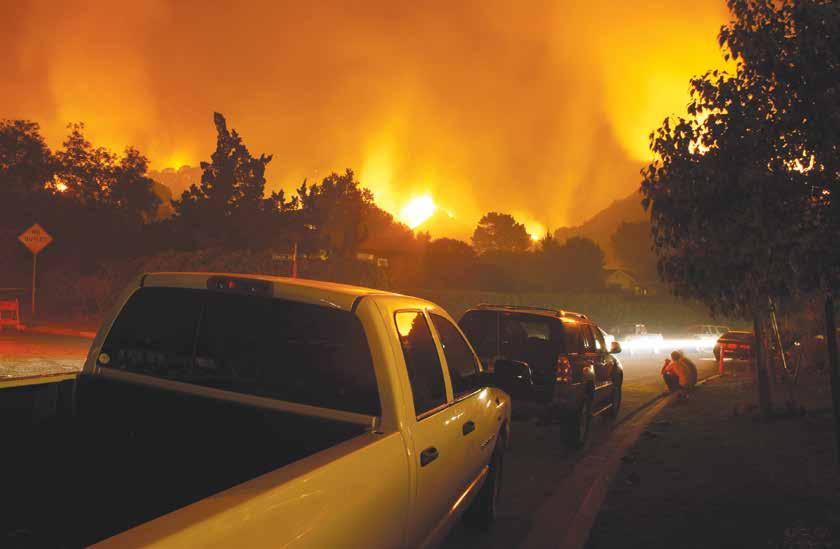

In his “Canticle of Brother Sun,” Francis calls on God to be praised through “Brother Fire,” calling him “beautiful and playful, robust and strong.” Yet, seeing the destruction from the wildfires in Southern California (and which we have experienced here in the north), how can we understand these words in the midst of pain and suffering?
Francis would remind us that we have to stand in awe of Brother Fire even when we encounter its sheer and sometimes destructive strength. With St. Francis, we might ask the Lord what Brother Fire, even in this encounter, can tell us about our relationship to God, to the rest of creation and to one another as brothers and sisters in Christ Jesus.
As St. Francis sings, fire is beautiful, yet we have to admit that sometimes it reveals a “terrible beauty.” Fire is a source of light, even when all around it is darkness. Fire also gives heat. Both of these things, heat and light, radiate out of the flames to touch the world around them.
Fire also has the power to transform. This transformation can be seen in so many different ways. We put wood in a fire and see it eventually transformed into ash. We use fire to cook raw meat so that it is not only more tasty but often more edible. The heat of fire changes unappetizing cake dough into a delicious dessert.
Is it any wonder that when the Scriptures try to give an image of the presence of God in our world, it is often by using the symbol of fire? God appeared to Moses in the burning bush, a fire that did not consume the bush (Ex 3: 1-4). God uses fire to manifest His presence in the tongues of flame that descend upon the disciples at Pentecost (Acts 2).
So, Brother Fire reminds us first of all of who God is. God is not just a beautiful thing or person, God is beauty itself, a beauty both consoling and awe-inspiring and indeed at times terrifying. Through fire we can learn something of God’s actions in our world, of bringing both light and heat to us even when all seems cold and dark.
Brother Fire, seen especially as robust and strong in the wildfires, also reveals important aspects of our relationship with the rest of creation. We are part of creation; we did not set things in motion, nor can we change the fundamental reality that God has made.
Fire shows us that we live within the structures of the universe God created. We have learned to “tame” fire, to use it for cooking and light and warmth. Yet the wildfires reveal how much of an illusion it is to think we have actually tamed the universe. We can manipulate the elements of the world around us, sometimes in very astounding ways, but Brother Fire reminds us that we do not possess absolute control, especially at those moments when we are lulled into thinking we do.
Brother Fire is just one of the creatures that calls us again and again to true humility, to realize that we are creatures. True humility means to accept that we are made of the same stuff as the rest of creation (“humus” means the clay or the dirt, from which Genesis tells us we are made). Fire and its power is just another call to accept that for all that we have learned about the universe and its elements, we are constantly confronted by the mystery at the heart of it all.
Finally, through Brother Fire, even in the form of these devastating wildfires, the Lord continues to show us how we, as God’s beloved creatures, are also related to one another. Fire reminds us of our basic equality before God and the universe. One thing often mentioned about wildfires is that they do not discriminate. Fires consume both mansions and shacks, homes of the rich and the poor. While Brother Fire reveals our common vulnerability, it also reminds us that we are called to walk with one another and help one another not only survive but also thrive as human beings, as brothers and sisters. The intensity of the fires has been matched by an intensity of the fire of charity, as so many people reach out to help those affected, not only with the basic necessities of life, but also emotional and spiritual support. Brother Fire evokes the beauty of the human heart, created in God’s image.
St. Francis’ Canticle teaches us to treat “Brother Fire” with respect, not as our servant, but as our fellow creature, another brother who can teach us how to “praise and bless the Lord and serve Him with great humility.” ■
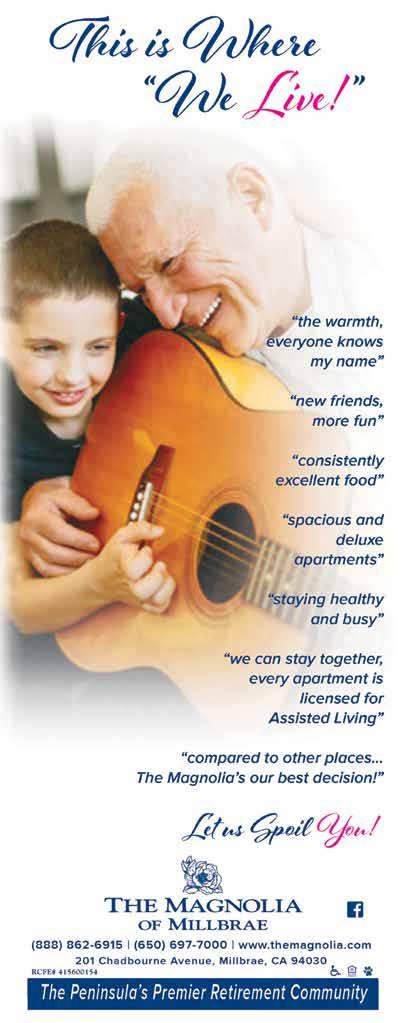

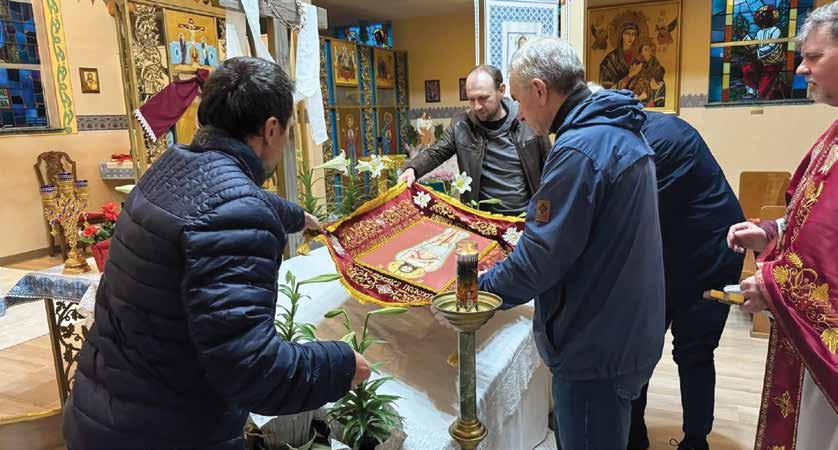

BY CHRISTINA GRAY Lead writer, Catholic San Francisco grayc@sfarch.org
The beloved Easter basket. In certain Eastern Catholic churches of the Byzantine rite, it’s more than a candy-crammed straw container delivered to children by a mythical bunny. It’s a venerable faith tradition filled with foods that represent the Lenten journey to “Pascha,” or Easter.
Families bring Easter baskets of food to the church to be blessed by the priest either on Holy Saturday or on Easter morning after the Divine Liturgy, according to Father Roman Bobesiuk, parochial administrator of Immaculate Conception Ukrainian Catholic Church. Each basket, draped with a cloth
embroidered with the words, “Christ is Risen,” holds lovingly prepared and presented foods that were abstained from during Lent.
“This tradition is deeply rooted in Ukrainian Catholic culture and is a beautiful expression of faith and family unity,” said Father Bobesiuk. “All meals on Easter Sunday are eaten from the basket so that no one need be busy with preparation of additional food on such a solemn holy day.”
Ukrainian Greek Catholics comprise the largest Eastern Catholic Church in the world, he said, but are a minority in Ukraine. Ukrainians arrived in San Francisco in several waves starting in the 19th and early 20th centuries, often working in shipbuilding or other trades. After World War II, the city became home to many refugees fleeing the Soviet regime. A new wave of migration began after the collapse of the Soviet Union, and more recently after Russia invaded Ukraine in 2022. Ukrainian Catholics there have especially suffered, he said, with Russian forces damaging or destroying religious sites, closing churches and expelling clergy.
Today, according to Father Bobesiuk, the San Francisco community is “quite diverse,” and includes descendants of early migrants as well as
Byzantine liturgy is known for its profound reverence and the extravagant solemnity of its ceremony, as well as its rich symbolism and use of religious iconography.”
newly arrived Ukrainians seeking spiritual support and a connection to their traditions.
The Byzantine Catholic tradition is one of five Eastern Catholic rites (composed of 23 individual churches). Byzantine Catholics, while sharing the same faith and the seven sacraments with Roman Catholics, maintain their distinct Eastern liturgical, theological, and spiritual traditions. Unlike Eastern Orthodox Christians, they are in full communion with the Pope of Rome.
San Francisco is home to two Eastern Catholic churches of the Byzantine rite: Immaculate Conception Ukrainian Catholic Church, located in San Francisco’s Portola District, and Our Lady of Fatima Russian Byzantine Catholic Church, located in the former convent for St. Monica Parish on Geary Boulevard.
“The Ukrainian Greek Catholic Church and the Russian Byzantine Catholic Church are both part of the Byzantine Catholic tradition,” said Father Bobesiuk. Though they share common Byzantine roots, each has “distinct histories and cultural identities,” he said.
This is true for every other church under the Byzantine rite as well, which express Byzantine heritage with its own ethnic traditions and customs.
Byzantine liturgy is known for its profound reverence and the extravagant solemnity of its ceremony, as well as its rich symbolism and use of religious iconography. This is because it arises from a different culture with a more “Hellenistic philosophy of art, drama and poetry,” said Father Kevin Kennedy, pastor of Our Lady of Fatima Russian Byzantine Church since 2013. He began double duty as rector/pastor of the Cathedral of St. Mary of the Assumption in 2022.
He called Byzantine Catholic churches “fully and equally Catholic” with the Latin rite of the Catholic Church.
Father Bobesiuk said ethnic customs and Byzantine liturgy are vividly expressed at “Pascha,” a word both Ukrainian Catholics and Russian Byzantine ›
1133 Broadway Millbrae, CA 94030 | (650) 697-4730
Holy Thursday
8:00 a.m. Morning Prayer
7:00 p.m. Mass of the Lord’s Supper, Adoration of the Blessed Sacrament until 11:00 p.m.
Good Friday
8:00 a.m. Morning Prayer
8:30 a.m. - 12:00 pm Confessions
12:30 p.m. Stations of the Cross
1:00 p.m. Seven Last Words
2:00 p.m Solemn Liturgy and Holy Communion and dramatization of the Passion
Holy Saturday
8:00 a.m. Morning Prayer
8:30 a.m. Confessions
EASTER VIGIL: 8:00 p.m.
Easter Sunday Masses
7:00 a.m., 10:00 a.m., & 11:30 a.m.
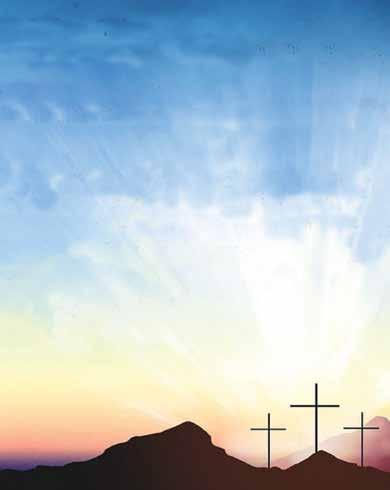
Come be part of a Welcoming, Warm, Inclusive Faith Community

ST. TERESA OF AVILA CATHOLIC CHURCH “In this hou riends, all are l helped, all are ST. TERES A
Holy Thursday, April 17 7:30pm
Good Friday, April 18 12:15pm
Holy Saturday, April 19 Easter Vigil, 8:00pm
Easter Sunday, April 20 8:30 & 10:00am


Catholics use for Easter. Pascha is derived from the Hebrew word for Passover, the Jewish feast on which the Pascal Lamb, Jesus Christ, was offered for the sins of the world.
Holy Week begins on “Willow Sunday,” when Ukrainian Catholics take branches of pussy willow to church to be blessed. It is traditional to tap one another with the blessed willow branches. This act is accompanied by several different phrases, depending on which region of Ukraine you are from, said Father Bobesiuk. One of them is “Be strong as water, rich as the earth, and healthy as a willow tree.”
Good Friday is a solemn day in Ukrainian Catholic churches. No manual labor is performed on that day, and a strict fast is maintained until after solemn vespers, which includes veneration of the Holy Shroud or “plashchanytsia.” The hand-painted or embroidered cloth depicting Christ’s body after he was taken from the cross is processed around the church, then placed in a symbolic tomb, often adorned with flowers. Many come forward to kiss the shroud in reverence to Christ’s sacrifice for their sins.
“This tradition is very dear to Ukrainian Catholics,” said Father Bobesiuk.
On Holy Saturday, families prepare baskets with the traditional foods of Pascha. The foods may include “paska,” a large round loaf of sweet bread that symbolizes Jesus Christ as the “living bread,” and lamb or other meats, such as sausages or bacon, symbolizing Jesus as the sacrificial lamb.
All the foods are those abstained from during Great Lent, said Father Bobesiuk, and each has meaning in the Easter feast, which takes place after the Paschal Divine Liturgy, either at home or at the church.
Cheeses and butter are included and symbolize the sacrifice and tenderness of God, he said, “which one should wish for as a child wishes the mother’s milk.” By tradition, dairy products are put in small containers and are covered with lids where crosses are drawn. Butter is often shaped into a lamb or is decorated with a cross.
Ukrainian decorated Easter eggs are a national art, according to Father Bobesiuk, the more elaborate known as “pisanki.” Simple, single-color eggs are known as “krashanka,” traditionally colored red. According to legend, Mary Magdalene came to Tiberius, the second emperor of Rome, to announce the resurrection of Christ with a red egg.
Other symbolic ingredients in the basket include horseradish, a symbol of the invincibility of the human spirit after confession, and evergreens, a symbol of eternal life and immortality.
“In Ukrainian Catholic tradition, Easter is not just a one-day celebration,” said Father Bobesiuk. “It is preceded by deep liturgical and personal preparation and followed by a joyous Paschal season.” ■


SCAN TO VISIT THE IMMACULATE CONCEPTION UKRAINIAN CATHOLIC CHURCH WEBSITE or visit https://ugccsf.org/
SCAN HERE TO VISIT OUR LADY OF FATIMA RUSSIAN BYZANTINE CATHOLIC CHURCH WEBSITE or visit https://byzantinecatholicsf.org/
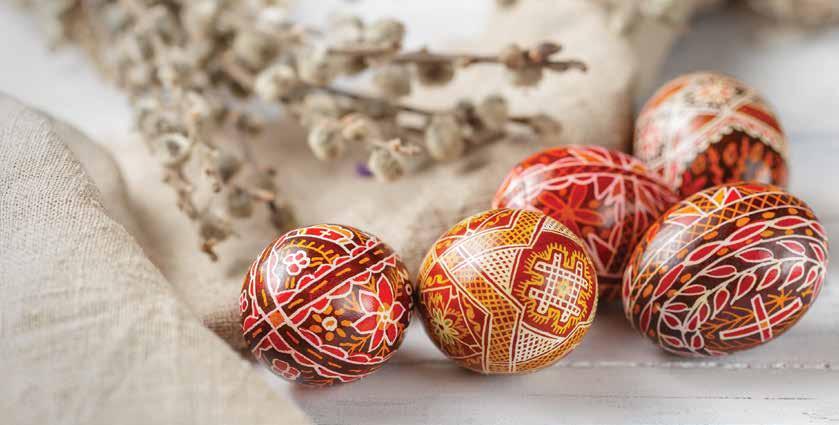
According to legend, Mary Magdalene came to Tiberius, the second emperor of Rome, to announce the resurrection of Christ with a red egg.”
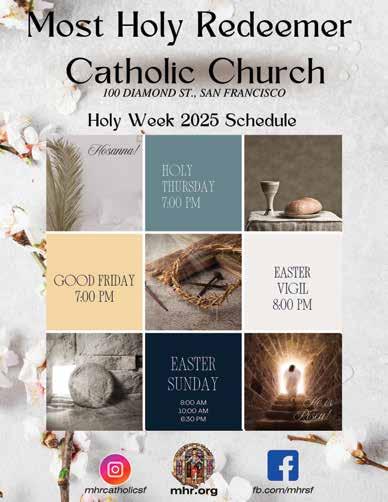

Palm Sunday April 13
Saturday 5 pm Vigil Mass
Sunday: 8 am, 10 am (with Solemn Procession), 5 pm, 7 pm USF Student Mass
Holy Thursday April 17
6:30 pm Mass of the Lord’s Supper Adoration of the Blessed Sacrament until 10 pm
Good Friday April 18
12 noon Women Preach: Meditations on the Passion
1:45 pm Liturgy of the Passion of our Lord Reconciliation: 11 am to Noon & 3 to 5 pm
Holy Saturday April 19
8 pm The Great Vigil of Easter
EASTER SUNDAY April 20
8 am, 10 am (followed by Easter Egg Hunt), 12 pm
650 Parker Ave., San Francisco | stignatiussf.org

Radiating the Joy of the Gospel in the Heart of the City PALM SUNDAY, APRIL 10
Holy Week
5:30 pm Saturday Vigil Mass (April 9)
7:30 am Quiet Mass
Palm Sunday, April 13
Mass Schedule
5:30 pm: Saturday Vigil Mass (April 12, 2025)
7:30 am: Quiet Mass
*9:15 am Mass begins at the Lourdes Grotto, procession with donkey
11:30 am Solemn Choral Mass
9:15 am: Family Mass begins at the Our Lady of Lourdes Grotto, procession into church with donkey
11:30 am: Solemn Choral Mass
1:30 pm Mass in Spanish with Passion Play
1:30 pm: Mass (in Spanish)
5:30 pm Mass with Contemporary music
5:30 pm: Mass with Contemporary music
HOLY THURSDAY, APRIL 14
Monday of Holy Week, April 14
5:30 pm: Dominican Rite (low) Mass
*7:30 am Tenebrae
*7:30 pm Mass of the Lord’s Supper
Holy Thursday, April 17
7:30 am: Tenebrae followed by a reception
11:20 pm Last Supper discourse
7:30 pm: Mass of the Lord’s Supper
11:20 pm: Last Supper Discourse (church closes shortly after)
GOOD FRIDAY, APRIL 15
*7:30 am Tenebrae
Good Friday, April 18
*12:00 pm Stations of the Cross
7:30 am: Tenebrae followed by a reception
12:00 pm: Stations of the Cross
12:30 -3pm: Confessions
12:30 pm Confessions to 3:00 pm
12:45 p.m.: The Seven Last Words of Christ
*12:45 pm The Seven Last Words of Christ
1:45 pm The Passion of Our Lord (simple)
1:45 p.m.: The Celebration of The Passion of the Lord (simple)
*7:30 pm The Passion of Our Lord (solemn)
7:30 p.m.: The Celebration of The Passion of the Lord (solemn) There are no Masses on Good Friday
HOLY SATURDAY, APRIL 16
Holy Saturday, April 19
8:00 a.m.: Tenebrae followed by a reception
8:30 p.m.: Easter Vigil Mass followed by a reception
Easter Sunday, April 20
7:30 a.m.: Mass with Easter Hymns
9:30 a.m.: Family Mass with trumpet
11:30 a.m.: Solemn Choral Mass, Schola cantorum, trumpet & strings
1:30 p.m.: Mass (in Spanish)
5:30 p.m.: Mass with Contemporary music No Coffee Minute or Confessions this day
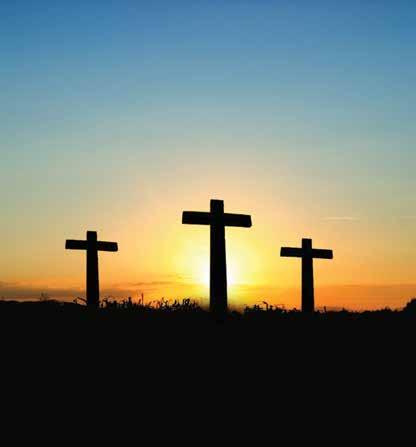
www.stdominics.org
*Visit our website for updates and links to live streamed Masses and liturgies

BY CHRISTINA GRAY Lead writer, Catholic San Francisco grayc@sfarch.org

Being baptized into the Catholic faith as an adult is a life-changing experience, the meaning of which Archbishop Salvatore J. Cordileone believes is expressed most fully in the ancient tradition of full-immersion baptisms. At last year’s Easter Vigil at St. Mary’s Cathedral, 17 catechumens were baptized in a new immersion baptismal font built especially to return the cathedral to this liturgically rich practice.
This year, nearly 50 catechumens are expected to emerge from the baptismal font and into new lives of grace after Easter Vigil baptisms on April 19, according to Deacon Christoph Sandoval, coordinator of the cathedral’s Order of Christian Initiation of Adults.
Last year after the cathedral’s first full-immersion baptisms at the Easter Vigil, Archbishop Cordileone talked to Pablo Kay, editor of Angelus magazine, about his reasons for returning to full-immersion baptism. He said baptism is the “door to all of the other sacraments.” As such, its sanctifying threshold is more “forcefully and convincingly” conveyed
through the rituals of full-immersion baptism.
“Yes, it’s a lot of heavy lifting to do a baptism by immersion,” he said, referring to the physical and liturgical orchestration required. “But it’s very profound.”
The symbolism of east and west was built into early Christian baptisms, the Archbishop said, and is reflected in the cathedral’s full-immersion baptisms. To be clear, it’s not mere stagecraft; every liturgical detail lays out the steps in a walk of redemption.
On the west side of the baptismal font — the west being the last place where the light of the sun arrives — catechumens renounce their sins.
“It’s a place of darkness, so, renouncing sin is renouncing the darkness,” the Archbishop said.
After turning to the east, catechumens profess their faith, “because east is the source of light, where the sun rises.” They enter the baptismal waters from the west side of the font in three steps. They are immersed three times, symbolizing the three days Christ spent in the tomb, then they walk three steps back up, symbolizing their being united with Christ in His resurrection.
St. Cyril of Jerusalem (A.D. 313-386) told early
Having gone down dead in sins, you come up quickened in righteousness.... and at the self-same moment, you were both dying and being born; and the water of salvation was at once your grave and your mother.”
ST. CYRIL OF JERUSALEM (A.D. 313-386)
Christians that “having gone down dead in sins, you come up quickened in righteousness....and at the self-same moment, you were both dying and being born; and the water of salvation was at once your grave and your mother.”
INSPIRED BY PRISONERS
Father Jerald Geronimo, parochial vicar of St. Mary’s Cathedral, told Catholic San Francisco that it was the Archbishop’s baptism of San Quentin State Prison inmates that helped spark the Archbishop’s desire to bring full-immersion baptisms to the cathedral.
“It is my understanding that they have a fullimmersion font there (San Quentin), and he would use this font every year at Easter time,” said Father Geronimo. The power of full immersion can be palpable for all those present to witness, he said. “These baptisms are of men who once were very far from Christ due to their past lives of sin and darkness but who now have fully repented and want to fully live a new life of holiness in Christ Jesus, the Light of the World.”
Once a decision was made to introduce fullimmersion baptism at the cathedral for the 2024 Easter Vigil, there was the not-insignificant matter of needing a suitable immersion baptismal font.
Deacon Sandoval said that when the cathedral was designed more than 50 years ago, early plans included an immersion font. This perhaps reflected the liturgical ambitions of the Second Vatican Council at the time ground was broken for the new cathedral in 1965. The council endeavored to make the symbols of Christian life more tangible to the world, he said. In any case, the final plans did not include one. The marble baptismal font at the entrance to the church is for baptism by affusion (a Latin derivative that means to “to pour on”). This font will still be used for infant baptisms or those ›
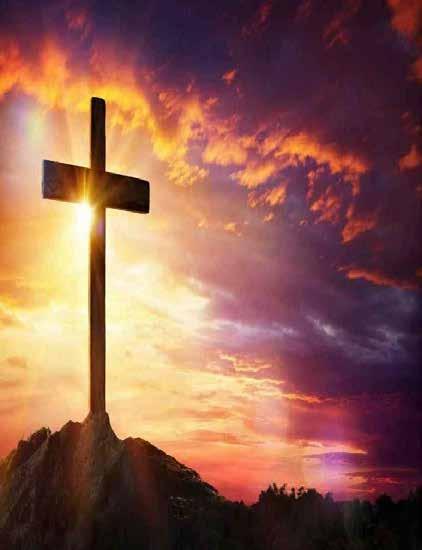
459 Somerset Street
Office: 449 Holyoke Street ◦ San Francisco ◦ 415 468 0820
HOLY WEEK SCHEDULE 2025
PALM SUNDAY VIGIL, SATURDAY, APRIL 12 Confessions: 4:00 pm ◦ Mass: 4:30 pm
PALM SUNDAY, APRIL 13
Confessions: 10:00 am ◦ Masses: 8:30 and 10:30 am
HOLY THURSDAY, APRIL 17
No Morning Mass ◦ Morning Prayer at 8:30 am 6:30 pm - Mass of the Lord’s Supper Adoration of the Blessed Sacrament until 9:00 pm
GOOD FRIDAY, APRIL 18
No Morning Mass ◦ Morning Prayer at 8:30 am 12:00 - 12:45 pm ◦ Stations of the Cross 12:45 - 1:30 pm ◦ Reflections on the Cross 1:30 - 3:00 pm ◦ Good Friday Liturgy
HOLY SATURDAY, APRIL 19
No Morning Mass ◦ Morning Prayer at 8:30 am Confessions: 9:00 – 10:00 am
EASTER VIGIL: SATURDAY, APRIL 19 Mass: 8:00 pm
EASTER SUNDAY: APRIL 20 Masses: 8:30 and 10:30 am

by Dennis Callahan
Reynolds, the longtime manager of the Archbishop’s residence, is baptized at St. Mary’s Cathedral Easter Vigil on March 30, 2024.
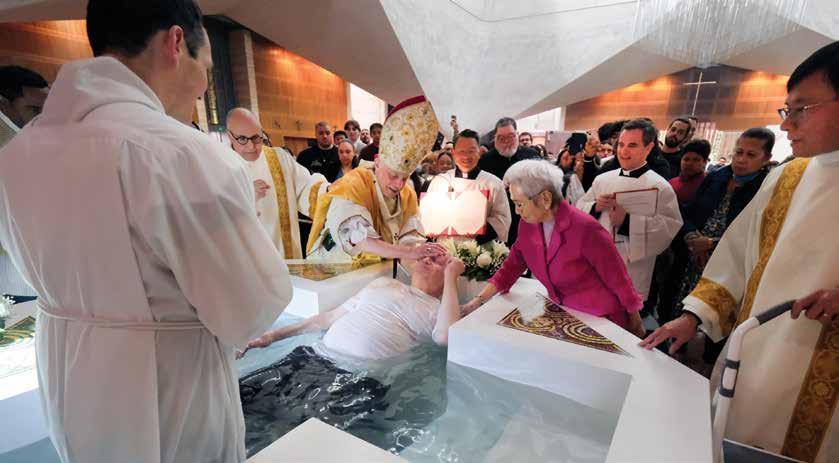
A full immersion baptism, by its very liturgical and ritual nature, incorporates truth, beauty, and goodness in a very powerful way. This year is the Jubilee Year of Hope, and full-immersion baptism has hope written all over it.”
FATHER JERALD GERONIMO, parochial vicar of St. Mary’s Cathedral
physically unable to step into the immersion font. Located adjacent to the original font, the immersion font was donated to the cathedral by members of the Neocatechumenal Way from St. Peter’s Parish in the Mission District. The Neocatechumenal Way is a movement inspired by the catechumenate of the early Catholic Church where converts from paganism were prepared for baptism. On the sides of the new font are icons painted in the style of Kiko Argüello, a Spanish artist and co-founder of the Way.
CATHEDRAL
Father Geronimo said full-immersion baptisms are more “forcefully convincing to the eyes of all witnesses” because they are a “reflection of Christ’s bodily sacrifice for our sins.”
He recalled the communal joy at last year’s Easter Vigil after the first full-immersion baptisms.
“Everyone had a smile on their face that night,” he said, including the Archbishop, concelebrating priests, altar servers and family and friends of the catechumens.
He called it a “grace-filled moment,” to watch catechumens of all ages go into the water and rise out of it radiating the “contagious joy of a person who realizes that he or she has been cleansed from their sin.”
Don Reynolds, manager of the Archbishop’s residence for more than two decades, said he was the last catechumen to enter the font last year. He said he left it obviously soaking wet, but “lighter and at peace.”
“I finally came to the realization that I needed God in my life,” he said. “It had been right in front of me, and I was kind of in denial about it.”
Father Geronimo said the Archbishop’s intention is for the cathedral to be a “model of liturgy” for other parishes. He and cathedral pastor Father Kevin Kennedy endeavor to implement the Archbishop’s vision of evangelizing all visitors to the cathedral through “truth, goodness and beauty” for the greater glory of God.
“A full-immersion baptism, by its very liturgical and ritual nature, incorporates truth, beauty and goodness in a very powerful way,” said Father Geronimo. “This year is the Jubilee Year of Hope, and full-immersion baptism has hope written all over it.” ■
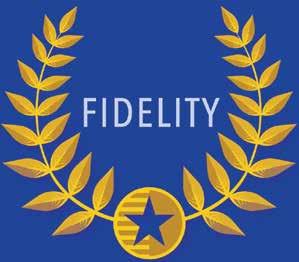
Together, we can strengthen the values that unite all Americans despite our many differences. Join us in June by celebrating fidelity to God, spouses and families, and our country and communities. SCAN FOR MORE INFORMATION or visit www.fidelitymonth.com

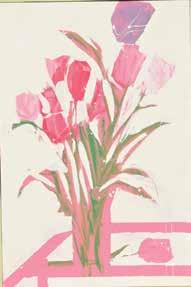

First steps and leaps of faith. Whispered hopes and daring dreams. New beginnings and familiar comfort. This is life. This is home.
SRES certified, I am an expert in trusts, helping seniors and families of seniors with their real estate needs. All of my services include estate sales, donations, shipping, prepping the home for market, landscaping, staging, and most importantly, listening to the individual needs of my clients. I also provide both art and furniture appraising services. My purpose is to serve my clients with dedicated professionalism.

Mission San Francisco de Asis
Founded October 9, 1776 celebrating the 250th anniversary of founding in 2026
Mission Dolores Basilica
2025 Easter Liturgies
Palm Sunday of the Lord’s Passion - April 13th
Masses: 5 p.m. (Sat. Vig.), 8 a.m., 10 a.m., 12 noon (Span.) Blessing of Palms and Procession at 10 a.m. & 12 noon Masses
Holy Thursday - April 17th
8:00 p.m. - Solemn Mass of the Lord’s Supper [Bilingual] followed by procession and adoration until 11 p.m.
Good Friday of the Lord’s Passion - April 18th
12:00 noon - Stations of the Cross and Meditation Prayer
6:30 p.m. - Liturgy of Good Friday [Bilingual] followed by Santo Entierro Procession
Holy Saturday - April 19th
3:30 - 5:00 p.m. - Sacrament of Reconciliation
8:00 p.m. - Easter Vigil Liturgy [Bilingual]
Easter Sunday - April 20th
8:00 a.m. - Mass [cantor & organ]
10:00 a.m.- Mass [Basilica Choir – brass & organ]
12:00 noon - Mass [Spanish – Coro y organo]
REALTOR ® | 2021 Top Producer, Peninsula Region 650.346.1361 e.smith@ggsir.com EmilySmithRealty.com Lic. #01927979
Each office is independently owned and operated.

DONATIONS support the upkeep and maintenance of this historic landmark. Please remember us in your estate planning.
VANCO DONATIONS
Mission Dolores Basilica 3321 Sixteenth St. San Francisco, CA 415-621-8203
www.missiondolores.org Rev. Francis P. Garbo, Pastor
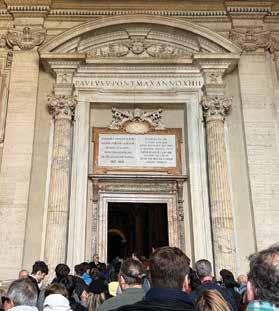
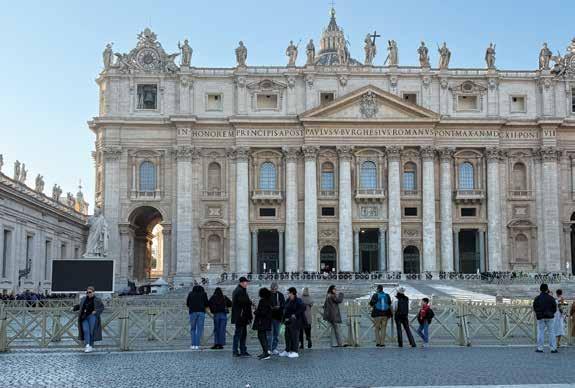

BY MARY POWERS Assistant director of communications and media relations. Office of Communications, Archdiocese of San Francisco
Catholics around the world are marking a significant moment in 2025 — the Jubilee Year of Hope. Pope Francis has called on the faithful to embrace this time as “pilgrims of hope,” renewing our faith and spiritual lives.
Jubilee years take their roots from Jewish tradition as a special year of pilgrimage, reconciliation and prayer. The first jubilee in the Catholic Church was celebrated in 1300 and the frequency of the holy years have fluctuated over time. Traditionally, Catholics travel to Rome to enter the four major basilicas through a “holy door,” obtaining a plenary indulgence when all conditions are met. Local pilgrimage sites are also designated for those unable to travel to Rome, along with other ways the faithful may obtain an indulgence during the Jubilee Year.
In January, I traveled to Rome and participated in the jubilee celebrations. Drawing from my experience, I thought I would share some insights and tips with our readers.
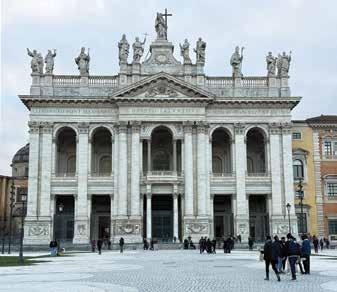
The Papal Basilica of St. John Lateran is the cathedral of the Pope as Bishop of Rome and opened its holy door on Dec. 29.
One of the foremost concerns when traveling abroad is safety. Security in Rome is exceptionally tight. Each of the four papal basilicas, which have holy doors open during the Jubilee Year, require visitors to pass through
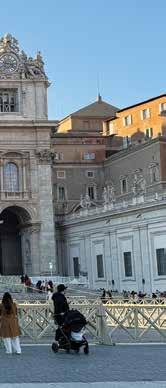
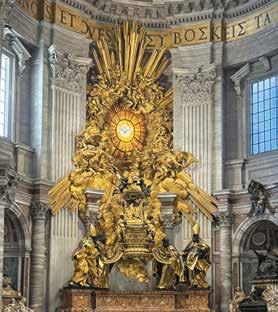
metal detectors and have their bags screened. There is also an increased security presence around the city, particularly in Vatican City.
The Holy Father will preside over special events throughout the year. Pilgrims can apply for tickets to these celebrations through the official jubilee website.
One of the unique aspects of the Jubilee Year is the opportunity to pass through the holy doors at the four papal basilicas in Rome. Entering the basilica through the holy door symbolizes our entrance into the Church through Christ, the Good Shepherd and door to salvation.
The jubilee website explains: “In crossing the threshold of the holy door, the pilgrim is reminded of the passage from chapter 10 of St. John’s Gospel where Jesus says, ‘Amen, amen, I say to you, I am the gate for the sheep. … Whoever enters through me will be saved and will come in and go out and find pasture.’ Passing through the holy door expresses the decision to follow and be guided by Jesus, who is the Good Shepherd.”
If you are planning a pilgrimage to Rome, these are the four papal basilicas with holy doors to visit:
Built over the tomb of St. Peter, this basilica is one of the most revered pilgrimage sites in the world. Beneath the basilica, visitors can ›
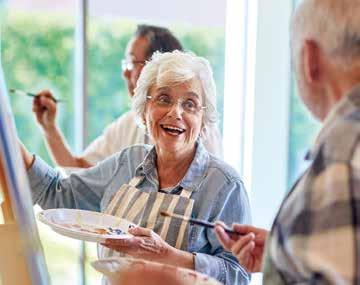
When mind, body, soul, and senses all play together, you’re living the creative life. At Peninsula Del Rey, you’ll encounter fascinating neighbors, stylish ambiance, chef-crafted cuisine, and a tantalizing array of creative activities and clubs to embrace. If the dance of life has a hub, this is it. Book a tour and find your spark.

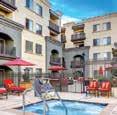


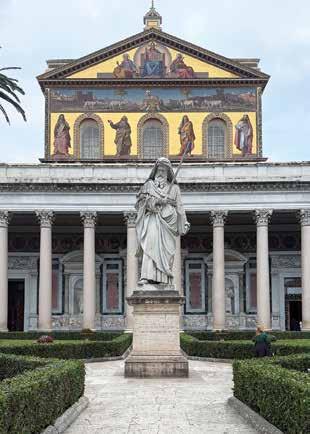
explore the crypt, which houses the tomb of St. Peter and several popes. Within the basilica, one can pray before Michelangelo’s “Pieta”; visit the tombs of papal saints such as Pope St. Pius X, Pope St. John Paul II and Pope St. John XXIII; and gaze upon the original chair of St. Peter below the famous stained-glass window of the Holy Spirit.
As the original jubilee basilica and the official cathedral of the Pope as the bishop of Rome, St. John Lateran has a rich history dating back to the Emperor Constantine, who donated the land to the Church in A.D. 313. The main altar contains relics of Sts. Peter and Paul and fragments of the altar where St. Peter and early popes celebrated Mass. In a side chapel, pieces of the table from the Last Supper are contained in a reliquary above the altar. Pope Leo XIII is also buried here. Just outside the basilica, pilgrims can visit the holy stairs believed to be the steps from Pontius Pilate’s praetorium, which Jesus climbed before His trial.
St. Mary Major in Rome is one of the first basilicas dedicated to the Blessed Virgin Mary and is associated with a miraculous snowfall in A.D. 352. Inside, pilgrims can venerate wood from the manger in Bethlehem and pray before the famous icon of Our Lady, “Salus Populi
Left, pilgrims from Singapore enter the holy door at St. Mary Major in Rome, one of the first basilicas dedicated to the Blessed Virgin Mary.
Center, statue of St. Paul welcomes pilgrims to the papal basilica named after the saint where the holy door (right) was opened on Jan. 5.
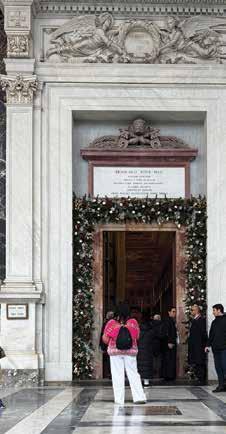
Romani,” believed to have been painted by St. Luke. This image is a favorite of Pope Francis, who prays in the chapel there before and after every papal trip.
Among the many popes buried in St. Mary Major is Pope St. Pius V, the Dominican pope who initiated the feast of Our Lady of Victory, later becoming Our Lady of the Rosary, in gratitude for the victory at the Battle of Lepanto.
Built over the tomb of St. Paul, this basilica was consecrated in A.D. 324 and remains one of the most breathtaking pilgrimage sites in Rome. On the exterior sits a majestic courtyard and statue of St. Paul, leading pilgrims into a quiet sanctuary of prayer. A unique aspect of the interior of the basilica is the mosaics on the walls depicting every pope from St. Peter to Pope Francis.
Visiting the holy doors and walking in the footsteps of saints and martyrs is a profoundly spiritual experience. Whether you’re planning a pilgrimage to Rome or participating in the Jubilee Year from your home parish, the graces of this Holy Year are abundant. I hope that many of you will have the opportunity to embark on this pilgrimage of hope, deepening your faith and renewing your spirit in this special year of grace. ■


Archbishop Cordileone has designated the following churches as pilgrimage sites in the Jubilee Year for the Archdiocese of San Francisco:
Cathedral of St. Mary of the Assumption
Mission Dolores Basilica
National Shrine of St. Francis of Assisi
Mission San Rafael Arcángel
St. Patrick’s Seminary and University Chapel

SCAN FOR MORE INFORMATION ON THE JUBILEE YEAR and ways to participate in the Archdiocese of San Francisco! Or visit www. sfarch.org/jubilee-year-of-hope
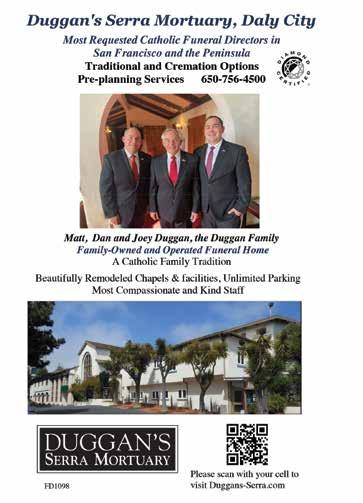
Round trip airfare • Transfers to and from Medjugorje by modern coach • Marian Pilgrimages team throughout your pilgrimage
• Hotel accommodation close to St. James Church with breakfast & evening meal • Marian Pilgrimages spiritual program and more
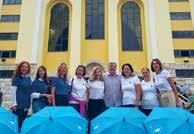

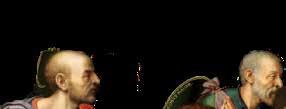

The following excerpt is taken from “Eucharistic Gems: Daily Wisdom on the Blessed Sacrament” by Father Donald Calloway, MIC.
This is one of many Eucharistic reflections that will be published by Catholic San Francisco magazine as part of the U.S. Catholic Church’s Eucharistic Revival (eucharisticrevival.org) that began on June 19, 2022, on the feast of Corpus Christi, and continues through Pentecost 2025.
“Eucharistic Gems” is a collection of 366 timeless quotes on the Eucharist from popes, saints, blesseds, venerables and servants of God. This excerpt is from daily quotes for the month of April.
APRIL 19
“In her daily preparation for Calvary, Mary experienced a kind of ‘anticipated Eucharist’ — one might say a ‘spiritual communion’ — of desire and of oblation, which would culminate in her union with her Son in His passion and then find expression after Easter by her partaking in the Eucharist which the apostles celebrated as the memorial of that passion.” -Pope St. John Paul II
APRIL 20
“This what I pray for, long for: to be made wholly one with you, to withdraw my heart from all created things, and through holy Communion learn more to delight in heavenly and eternal things. -Thomas À Kempis
APRIL 21
“Thank you for the good gift of this your holy body and blood, which I desire to receive, as a cleansing from sin, and for the defense against it. Lord, I acknowledge that I am far from worthy to approach and touch this sacrament; but I trust that mercy which caused you to lay down your life for sinners that they might be justified, and because you gave yourself willingly as a holy sacrifice to the Father.”
APRIL 22
-St. Anselm of Canterbury
“The Eucharist is something more than simply receiving Christ. It supposes that we satisfy His hunger. Christ invites us. ‘Come to me.’ Christ hungers for souls.”
-St. Teresa of Calcutta
APRIL 23
“Do not injure Jesus, my child, for the coldness of men, the ingratitude of souls and the solitude of the tabernacle still wound Him with bitter disappointment.”
-Blessed Concepción Cabrera de Armida
APRIL 24
“In this most admirable sacrament, which is the chief means whereby men are engrafted on the divine nature, men also find the most efficacious help toward progress in every kind of virtue.”
-Pope Leo XIII
APRIL 25
“And as they were eating, He took bread, and blessed, and broke it, and gave it to them, and said, ‘Take; this is my body.’ And He took a chalice, and when He had given thanks, He gave it to them, and they all drank of it. And He said to them, ‘This is my blood of the new covenant, which is poured out for many. Truly, I say to you, I shall not drink again the fruit of the vine until that day when I drink it new in the kingdom of God.’” -Mark 14:22-25
APRIL 26
“O my Jesus, I understand the meaning of ‘host,’ the meaning of sacrifice. I desire to be before your majesty a living host, that is, a living sacrifice that daily burns in Your honor. When my strength begins to fail, it is holy Communion that will sustain me and give me strength.”
-St. Faustina Kowalska

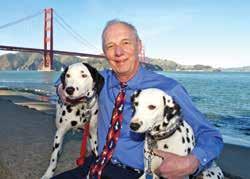

APRIL 27
“Happier than those who lived during His mortal life, when He was only in one place, we find Jesus Christ today in every corner of the world, in the Blessed Sacrament.”
-St. John Vianney
APRIL 28
“Always remember that the more you allow Mary to act in your Communion, the more Jesus will be glorified.”
-St. Louis de Montfort
APRIL 29
“Oh sweet blood, you strip us of selfish sensual love that weakens those who wear it, and you clothe us in the fire of divine charity.”
APRIL 30
-St. Catherine of Siena
“The bread itself and the wine are made over into the body and blood of God.”
-St. John Damascene ■

SCAN TO VIEW MORE FROM EUCHARISTIC GEMS or visit https://shopmercy.org/ eucharistic-gems-daily-wisdomon-the-blessed-sacrament.html



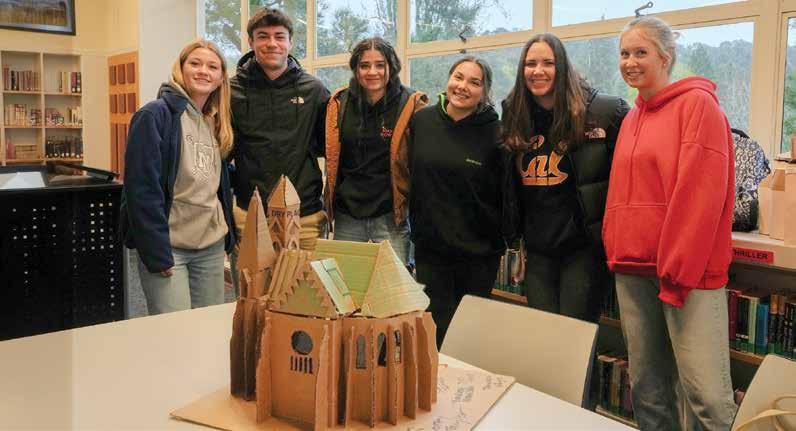

BY FRANCISCO VALDEZ Reporter, Catholic San Francisco
The Dominican Sisters of Mary, Mother of the Eucharist at Marin Catholic High school creatively instill in students the three transcendentals of truth, beauty and goodness through an annual project where seniors build replica models of one of six medieval cathedrals. Each cathedral building project includes about eight students drawn from three senior classes.
Dominican Sister Peter Joseph, a theology teacher at Marin Catholic, conceived the project in the fall of 2024 after a conversation with her theology colleagues on ways to increase Catholic identity.
Several teachers drawn from different disciplines serve as project judges. A history teacher evaluates historical accuracy; a math teacher analyzes engineering/architectural details; and a theology teacher with arthistory experience judges artistic beauty. Awards are given to student groups based on these categories as well as an overall excellence award. The cathedrals are displayed in the school’s library for the enjoyment of all students.
“One of the most exciting moments was when they looked at the early floor plans and they recognized that the design is in the shape of a cross,” said Sister Peter Joseph. “That’s exactly what I want students to see. It’s a place where the sacrifice of the Mass is offered where we most perfectly worship God and where heaven and earth are meeting in that physical place.”
“The school exists to bring students
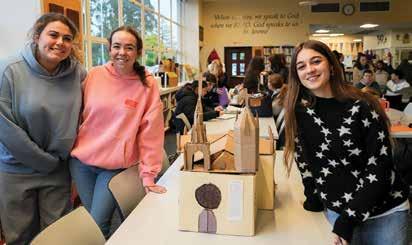
From left, Niamh Wilson, Suzie Cibrowski and Ruby Trainor. Not shown: Reagan Ghilotti, Hadley Hodges, Qas Vidyarthi, Bella Meneses and Isabel Libordi. This student group created the cathedral at Reims, earning recognition across all categories of engineering/architectural excellence, historical accuracy, art and beauty, and overall excellence.
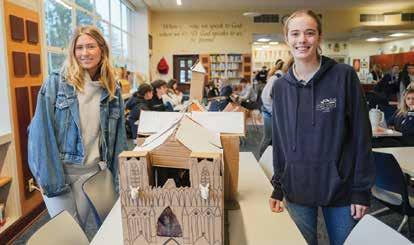
From left, Emma Slaught and Elizabeth Lyons. Not shown: Faith Jacques, Hannah Levine, Grace Diego, Ellie Seymoure, Maile Gassaway, and Lucy Gonzalez. This student group also created the Chartres Cathedral, earning recognition for engineering/architectural excellence.
to Jesus Christ,” said judge and history teacher Dominican Sister Hyacinth Hayward. “This project is absolutely beautiful because it gives students a contact with beauty which has a way of drawing us into a deeper relationship with the Lord.”
The judges said cathedrals are physical representations of our love for God and are designed for worship. Such breathtaking structures represent the essence of what is true, beautiful and good in this world. ■

SCAN TO WATCH A VIDEO ABOUT THE PROJECT or visit https://sfarch.org/truthbeauty-and-goodness/
The O ce of Child and Youth Protection at the Archdiocese of San Francisco is responsible for creating a safe and compassionate environment for abuse victim-survivors to come forward. Every allegation is treated seriously and discreetly, and immediate steps are taken to protect the confidentiality and the rights of both victim-survivors and alleged abusers.
As a result of the diligent work and dedication of the staff and clergy who participate in the program, new cases of sexual abuse are rare today in the Archdiocese. Yet, we remain steadfast in our commitment to protect children, report allegations and remove perpetrators from ministry.
All those whose ministry or job involves interacting with minors must be fingerprinted and participate in a training course on recognizing, preventing, and reporting suspected abuse prior to beginning their employment or volunteer work. The course must be repeated every three years. The Victim Assistance Coordinator supports and advocates for victim-survivors of sexual abuse through counseling and programs.
Deacon Fred Totah Director of Pastoral Ministry (415)614-5505
Karen Guglielmoni Safe Environment Coordinator (Youth) (415)614-5578



Twyla Powers Safe Environment Coordinator (Adults) (415)614-5576
Rocio Rodriguez Victim Assistance Coordinator (415)614-5506

22,201
children are taught safe environment lessons to assist them in personal safety, abuse recognition and prevention. The Office serves our parishes and schools by assisting with training and implementing our Safe Environment Program.
19,740
employees, educators and volunteers are fingerprinted and submit to background checks in compliance with the USCCB Charter for the Protection of Children and Young People.
478
priests, deacons and candidates for ordination are fingerprinted and submit to background checks in compliance with the USCCB charter.
If child abuse is suspected, first call local authorities, then the Archdiocese Victim Assistance Coordinator at (415) 614-5506.
MARIN
Child & Family Services 24-hour Abuse & Neglect Reporting Hotline: (415) 473-7153
SAN FRANCISCO
Family & Children’s Services 24-hour Reporting Hotline: (800) 856-5553 Police Department Non-Emergency Number: (415) 553-0123
SAN MATEO Child Protective Services Child
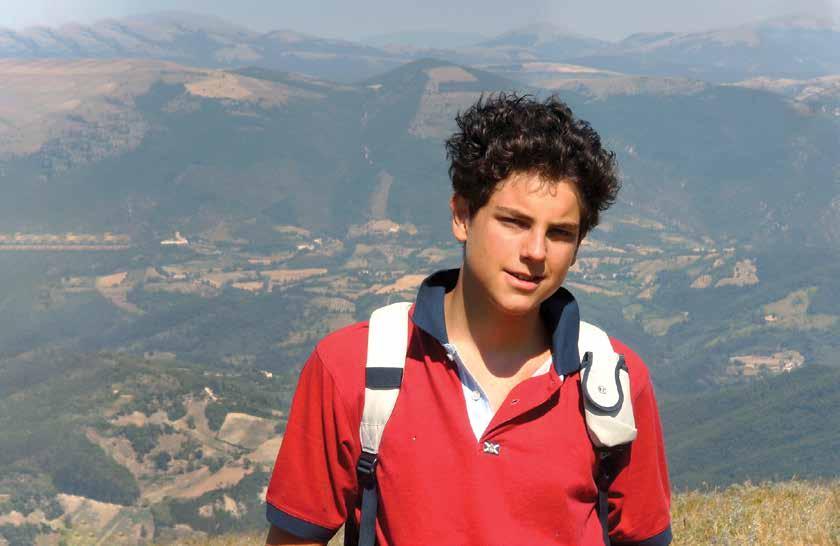
On April 27, Pope Francis will canonize
Blessed Carlo Acutis as a saint. Blessed Carlo was described by the Pope earlier this year as a “young saint of and for our times, (who) shows you, and all of us, how possible it is in today’s world for young people to follow Jesus, share His teachings with others, and so find the fullness of life in joy, freedom and holiness.”
Blessed Carlo is the first person of the millennial generation to be canonized and is truly a saint for our times – a jeans-and-T-shirt-wearing, pizzaeating computer geek who loved Jesus and strove to inspire others to believe in the real presence, love the Eucharist and return to Mass and Eucharistic Adoration. At only 15 when he died from Leukemia in 2006, he discovered his devotion as a child through the rosary. After receiving first Communion at age 7, he attended daily Mass to receive the Eucharist, a practice that inspired his mother, family and friends to renew their faith. He expressed his devotion beyond the walls of the Church, including standing up for classmates who were bullied, serving food to homeless people and passionately defending life from the moment of conception. Yet he also lived his life like a typical
teenager: being goofy, playing video games, playing soccer, eating pizza (his favorite food), going to school, devouring information about topics he was passionate about and taking full advantage of the technology available to him.
In fact, Blessed Carlo’s technology skills are why he is the patron saint of the Internet. He taught himself computer coding, mastering the C and C++ programming languages and ultimately used this knowledge to create a unique and lasting legacy. At age 11, he began building a website cataloging Eucharistic miracles (www.miracolieucaristici. org/). After three years, he finished compiling the documents on the site (available in 19 languages) describing more than 100 miracles, including source material for churches to create their own physical exhibitions.
Blessed Carlo’s greatest legacy may be the example he set — that one can still be a typical teenager while prioritizing a devotion to faith. He proved it to be both achievable and a source of inspiration. Since his first Communion, he loved the Eucharist and believed that “the more Eucharist we receive, the more we will become like Jesus.” He believed in the real presence, loved the Eucharist and saw Jesus as his friend.
When we are in communion with God, we are in communion with a love that is catching. As we are loved by Him, we can, in this way, love the world.”
During a 2023 Eucharistic Miracles exhibit using materials from Blessed Carlo’s website, Father Matthew McDonald described Blessed Carlo’s commitment to daily prayer in adoration of the Blessed Sacrament:
“Jesus reminds us that ‘No greater love is there than this, to lay down one’s life for a friend.’ (Jn 15:13) This is the love of friendship and faith that Carlo found in Jesus in the Eucharist. This love would become for him a place where he could dwell and that would strengthen him, mold him and unite heaven to his life on earth. Carlo would also say, ‘When we are in communion with God, we are in communion with a love that is catching. As we are loved by Him, we can, in this way, love the world.”’
The outcomes of this love of Christ are also described in Pope Francis’ “Christus Vivit” – a call to action for young people.
“Filled with the love of Christ, young people are called to be witnesses of the Gospel wherever they find themselves, by the way they live. St. Alberto Hurtado once said that ‘being an apostle does not mean wearing a lapel pin; it is not about speaking about the truth but living it, embodying it, being transformed in Christ. Being an apostle does not mean carrying a torch in hand, possessing the light, but being that light.’ The Gospel, more than a lesson, is an example. A message that becomes a life fully lived.”– (Christus Vivit, 175)
On April 27, as Blessed Carlo Acutis is officially declared a saint, his canonization will serve as a reminder to the young Church — teenagers and young adults — that a life of virtue and heroic faith is not only possible but within their reach. His example proves that youth is not a limitation but a gift, capable of inspiring others to embrace a life of faith.
Pope Francis’ exhortation in “Christus Vivit” echoes this call: “The Holy Spirit pushes you forward. The Church needs your enthusiasm, your insights, your faith. We need you!”
Blessed Carlo’s life stands as a testament that young people can live lives of deep faith, inspire others through their witness and make a lasting impact on the Church and the world. All are called to be saints, and all can be saints. ■






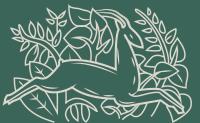
BY CHRISTINA GRAY
For more than one century, St. Anne’s Home in San Francisco has cared for needy seniors in their final years, including dozens of priests of the Archdiocese of San Francisco. The residential care home and skilled nursing facility run by the Little Sisters of the Poor will close its doors in April.
Provincial Superior, Sister Julie Horseman, LSP, said in a public announcement in January that it was a “difficult decision” to withdraw its San Francisco presence. The Little Sisters of the Poor have been caring for the elderly in San Francisco since 1901.
“The Little Sisters have recognized the need to withdraw from a certain number of homes in the United States while at the same time dedicating its resources to much needed upgrades and reconstruction projects in others,”
Sister Horseman said. The decision involved “many factors” and came only after a long period of “prayer, much consultation, and study.”
She said that proceeds from the sale of the San Francisco facility will be redirected to those projects and the general mission of the order.
The closure of St. Anne’s Home follows the closure of the Nazareth House in San Rafael in 2021. With the exception of Serra Clergy House in San Mateo that cares for aging priests, the closures effectively end Catholic-run residential care for the elderly within the boundaries of the Archdiocese of San Francisco. The Coronavirus pandemic and the high cost of local housing for staff presented “unsustainable” operational challenges that helped deal a fatal blow to the Marin County Nazareth House run by Sisters of Nazareth for nearly 60 years. Similar regional operating costs were a factor in the closure of St. Anne’s Home, according to Sister Horseman.
Alma Via assisted living, with locations in San Francisco and San Rafael, is a joint venture of the Sisters of Mercy of the Americas West Midwest Community and the Sierra Pacific Synod of the Evangelical Lutheran Church in America. Like St. Anne’s Home, Alma Via welcomes residents of all faiths.
The history of St. Anne’s Home is a story of devotion to the elderly that began in France with St. Jeanne Jugan, the French foundress of the Little Sisters of the Poor. In 1839, she carried a blind, old woman alone on the streets on a
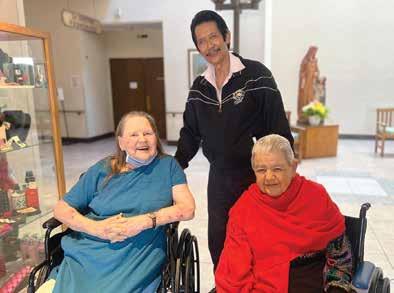
by
Nadine Calliguiri, in red, is pictured at St. Anne’s Home in February with an unnamed fellow resident, and a volunteer. Born with cerebral palsy and raised in North Beach, Calliguiri, 87, is the founder of Handicapables, a Catholic faith sharing ministry for disabled persons. She has moved to a Little Sisters of the Poor home in St. Louis, MO.
cold winter’s night into her own small apartment to care for her. She devoted the rest of her life to ministering to the needs of the elderly.
Not long after the Little Sisters arrived in San Francisco to care for the elderly poor, they outgrew their residential care home in the Mission District. Edward Joseph LeBreton, a successful local businessman and a devout Catholic, took an active interest in the Sisters’ mission and gifted them with an enormous brick home on Lake Street near the Presidio. It opened its doors in 1904.
“It is but for God that I am giving,” LeBreton told the Sisters. He placed two conditions on his gift. The first was an inscription for over the door that read: “In Honor of My Father and Mother.” The second was that St. Anne, the mother of Mary, be the patron namesake of the new home.
In 1977, St. Anne’s Home was declared unsafe in the event of a fire or earthquake. Thanks to the kindness of many benefactors and volunteers, the current structure at 300 Lake Street opened in 1979.
In making her announcement, Sister Horseman thanked Archbishop Salvatore J. Cordileone for his support of the mission of the Little Sisters of the Poor. In turn, he thanked them at a Mass of Thanksgiving celebrating their legacy at St. Dominic’s church on Feb. 23.
The Sisters who tenderly served the elderly at St. Anne’s Home for generations have “truly lived the charism of their foundress,” he said in his homily, and like her, are “the image of Christ on earth.”
“It is with heavy but indeed profoundly grateful hearts that we come to the closing of the Little Sisters’ witness to the love of Christ in our midst at St. Anne’s Home,” Archbishop Cordileone said. “Not simply talking about it but making it visible day in and day out, in myriad little ways that add up to a giant treasury of blessings for all of us.”




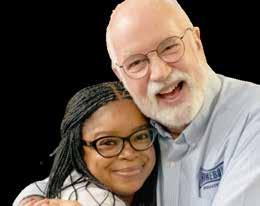

BY PETER MARLOW
In May 2025, we celebrate the 1,700th anniversary of the First Council of Nicaea (325), a time when Catholic and Orthodox churches were united.
Last year in January, we recognized the 60th anniversary of the historic, breakthrough meeting in Jerusalem on the slopes of the Mount of Olives between Pope St. Paul VI and Ecumenical Patriarch Athenagoras. This meeting provided a catalyst for open dialogue toward hopeful restoration of full communion between the Catholic and Orthodox churches.
Today, Pope Francis and Ecumenical Patriarch Bartholomew of Constantinople have a profound friendship and affection for one another. While they recognize that theological differences exist, they understand the importance of ongoing dialogue. They show us how to work together to achieve the many things we hold dear and in common.
These two church leaders join together annually for an ecumenical encounter. On June 29, the feast of Sts. Peter and Paul, patrons of Rome, the ecumenical patriarch sends a delegation to attend the celebrations presided over by the bishop of Rome. On Nov. 30, the feast of St. Andrew, patron of Byzantium (modern-day Istanbul), the bishop of Rome sends a special envoy to celebrate the patronal feast of the ecumenical patriarchate in Turkey’s historic capital.
We find a similar tradition and enduring friendship in San Francisco between Archbishop Salvatore Cordileone and Greek Orthodox Metropolitan Gerasimos.
Each year in January during the Week of Prayer for Christian Unity, Archbishop Cordileone and Metropolitan Gerasimos join together for solemn vespers at St. Pius X Catholic Church in Redwood City. In observance of this special week of prayer, Archbishop Cordileone presides over solemn vespers and Metropolitan Gerosimos gives the homily.
During Lent, Metropolitan Gerosimos presides at the annual Ecumenical Service of Salutations to the Holy Cross at the Greek Orthodox Church of the Holy Cross in Belmont, which is depicted on the cover of this magazine. Archbishop Cordileone is invited each year to give the homily. Following the service, the congregation is invited up to venerate a relic of the true cross positioned in the sanctuary of the church.
In most years, Catholics and Orthodox celebrate Easter on different Sundays because the Orthodox in general follow the Julian calendar and Catholics follow the Gregorian calendar. The setting of a common date for Easter has its origin 1,700 years ago this May at the First Council of Nicaea, which tied the Easter date to the Jewish Passover – the first Sunday after the full moon following the vernal equinox. Yet at that time, there existed different methods of measurement, and days, months and years didn’t always match. In addition, many communities didn’t adopt the prescribed practice. This was further complicated when Catholics switched from using the more ancient Julian calendar to the more accurate Gregorian calendar in the 16th century.
This year, we see a rare event where both calendars align and the Orthodox and Catholic churches will hold Easter on the same day, April 20. Pope Francis took this opportunity to propose a common Easter date, going forward, during an ecumenical prayer service associated with the Week of Prayer for Christian Unity in January.
“I renew my appeal that this coincidence may serve as an appeal to all Christians to take a decisive step forward toward unity around a common date for Easter,” said the Pope. “The Catholic Church is open to accepting the date that everyone wants: a date of unity.”
In 2024 during his visit to Constantinople, the Pope said the following about the forthcoming 1,700th anniversary of the Council of Nicaea:
“The now imminent 1,700th anniversary of the first ecumenical Council of Nicaea will be another opportunity to bear witness to the growing communion that already exists among all who are baptized in the name of the Father and of the Son and of the Holy Spirit.”
Ecumenical Patriarch Bartholomew of Constantinople reinforced a similar message when he said that the mutual celebration of Easter in 2025 will be “an amazing convergence.”
“As we have repeatedly highlighted lately, more than a calendrical coincidence, this alignment offers a great opportunity for togetherness, especially since the way of celebrating the date of Easter was one of the issues that the Council of Nicaea resolved,” he said.
While a unified Easter celebration wouldn’t solve the differences that divide Catholics and Orthodox, many argue it would be an important step for Christian unity.
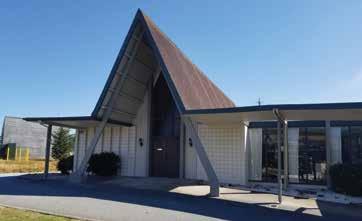







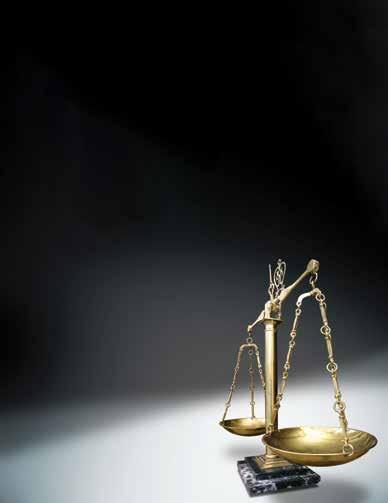



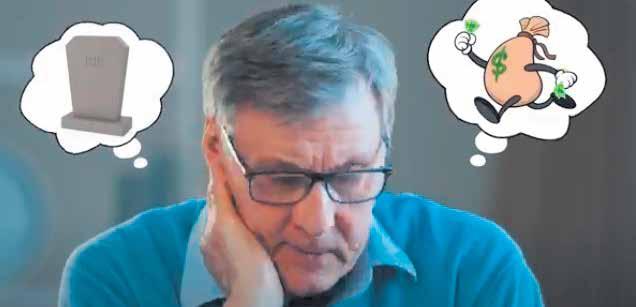






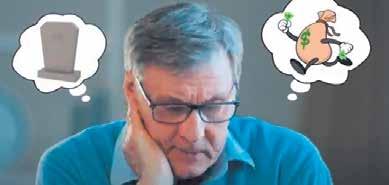


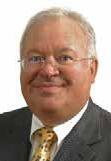


1. Before the Fall, Adam and Eve: e. Since all four answers are wrong, this one is right.
2. What are the four marks of the Church?
e. Each of the above answers is incorrect, making this one the right answer.
3. In terms of religion, what is a mystery?
c. While a mystery is a religious truth, it is not one about which we can know everything, the way we can know everything about the multiplication table. A mystery is a truth about which we know something (because it has been revealed to us by Christ) and concerning which we can draw true inferences and deductions, yet a mystery remains fundamentally beyond the capacity of the human mind to comprehend fully.
4. Who designed the dome of the cathedral of Florence? c. Brunelleschi (1377-1446) managed the remarkable feat of constructing the gigantic octagonal dome. At the time work started on the dome in 1420, no one knew how such a dome could be constructed without using a massive and infeasible amount of wooden scaffolding. Brunelleschi used a complex herringbone pattern for the 4 million bricks that were used in building the dome, and he invented machines to hoist the bricks to great heights.
5. How do we know which books belong in the Bible? c. Right. The canon of the Bible was determined by early Church councils, such as those held at Hippo in 393 and at Carthage in 397.

(415) 614-5506 This number is answered by Rocio Rodriguez, LMFT, Archdiocesan Pastoral Outreach Coordinator. This is a secured line and is answered only by Rocio Rodriguez. (415) 614-5503 If you wish to speak to a non-archdiocesan employee please call this number. This is also a secured line and is answered only by a victim survivor.
(800) 276-1562 Report sexual abuse by a bishop or a bishop’s interference in a sexual abuse investigation to a confidential third party. www.reportbishopabuse.org
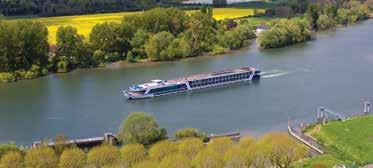

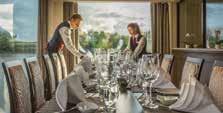
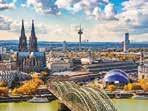
Spend 12 incredible nights aboard the AmaSiena to visit some of the most charming and beautiful cities along the Rhine River.

JOHN SPILLANE FENCES & DECKS
Lic. # 742961
Retaining Walls, Stairs, Gates, Dry Rot Senior & Parishioner Discounts 650-291-4303

JP LANDSCAPING & GARDENING
License #319526
Clean up, Weed Removal Lawn Services, Trimming Fences and Cement Serving SF; 415-664-1199
TRANSPORTATION NEEDED
Private person seeking to buy a used car, truck and RV Call Grant: 415.517.5977
HANDYMAN ALL PURPOSE HANDYMAN Free Estimates Painting, Roofing, Fences, Gutters, Gardening, Landscaping, Demolition, Hauling, Moving, Janitorial Call Grant: 415-517-5977

Appraisals for estate planning, gifting, private lending, dispute resolution, DoD valuations and estate settlement.
MICHAEL TOGNOTTI, PRINCIPAL APPRAISER 650-572-8258
Serving Select Bay Area Markets for over 37 years.
JOIN FRANCISCAN FR. MARIO DICICCO FOR HIS 2025 PILGRIMAGES
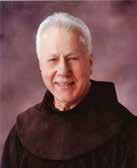

Following the Footsteps of St. Paul in Greece April 25-May 9
Ireland and Scotland May 24-June 8
Turkey October 11-25
For a brochure, write or call: Fr. Mario DiCicco, O.F.M. 110 West Madison St Chicago, IL 60602 (312) 888-1331 mmdicicco@gmail.com FrMarioTours.weebly.com
Trusted In-Home care. Hourly & 24 hr. Live-in. Hygiene assistance. Meal prep., housekeeping and errands/shopping. Low rates/free 1st day off. Bonded & insured. 415-960-7881 / 925-330-4760 / 650-580-6334

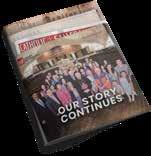


M. Button, Trust & Estate Attorney Probates * Wills * Trusts Sensitive to those Struggling with Loss. Serving the Entire Bay Area Woman Owned & Operated
Initial Phone Consultation 1052 Filbert Street San Francisco, CA 94133 Call Today: (415) 874-9361 www.buttonlawsf.com
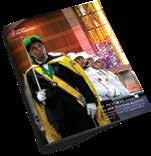
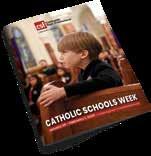
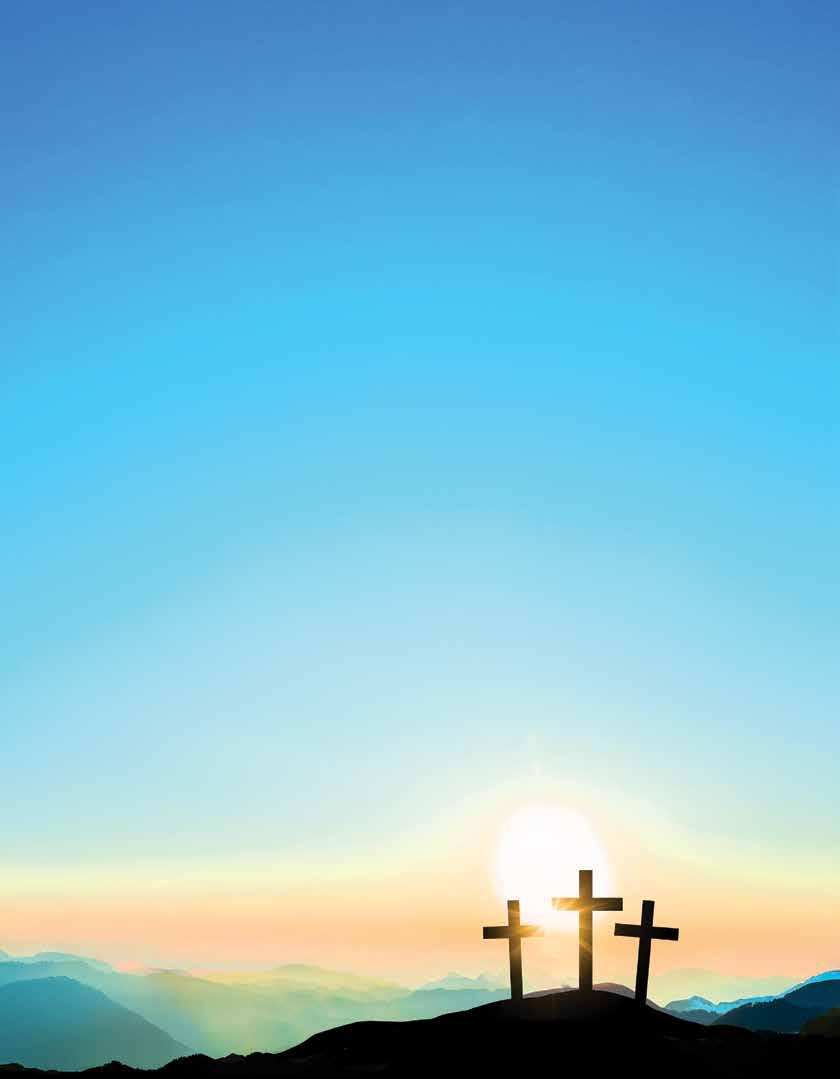

SCAN TO SEE THE COMPREHENSIVE CALENDAR OF EVENTS or visit sfarch.org/events
April 10: Chrism Mass
The Archdiocese of San Francisco’s annual Chrism Mass will take place on Thursday, April 10, at 5 p.m. at the Cathedral of St. Mary of the Assumption. Archbishop Salvatore J. Cordileone will bless the sacred oils that each parish will use for the coming year. To learn more about the Chrism Mass visit: https://sfarch.org/what-is-the-chrism-mass/
April 12: Adventures in Marriage Workshop
Join the Archdiocesan Office of Marriage and Family Life for a daylong marriage workshop on Saturday, April 12, from 8:30 a.m.to 4:30 p.m. at St. Mark Church in Belmont. This short course combines Catholic teaching with the latest relationship research to let couples experience practical, attainable skills for a more successful marriage. Learn more: https://sfarch. org/event/skills-for-sacramental-marriage-building/
April 20: Easter
April 27: Respect Life Essay Contest
Archbishop Cordileone will celebrate Mass for the winners of the 36th annual Archdiocesan Respect Life Essay Contest at 11 a.m. on Sunday, April 27, at the Cathedral of St. Mary of the Assumption. An awards ceremony will follow Mass in the Event Center.
May 10: Beloved Dinner
The Archdiocese of San Francisco will host a Mass and dinner for young adults at the Cathedral of St. Mary of the Assumption on Saturday, May 10. Mass will be celebrated by Archbishop Cordileone at 5 p.m. with music by Floriani Sacred Music Group. Cocktails and dinner will follow in the Event Center (black tie/ formal). The dinner will be prepared and served by the young men of the Archdiocese. Email Paul Campa with questions: campap@sfarch.org.
May 17: Permanent Diaconate
On Saturday, May 17, at 10 a.m., Archbishop Cordileone will ordain seven men to the permanent diaconate for the Archdiocese of San Francisco at the Cathedral of St. Mary of the Assumption. Join us for this momentous day in the Archdiocese of San Francisco.
May 23–25: Women’s Retreat for Healing after Abortion
Father Vito Perrone, a member of the Contemplatives of St. Joseph, will lead a free, three-day Women’s Retreat for Healing After Abortion. The weekend includes Mass, the sacrament of reconciliation, counseling and sharing as much as a woman is comfortable doing in this warm and healing environment. Contact the Archdiocesan Project Rachel Ministry for more information: projectrachel@sfarch.org.
The Archdiocesan Office of Marriage and Family Life will host a Life-Giving Wounds Retreat for children of divorced parents from Friday, May 30, to Sunday, June 1, at Vallombrosa Retreat Center in Menlo Park. This retreat focuses on discovering one’s identity as a child of God while also focusing on overcoming the effects of parental divorce, forgiving parents and connecting with others who have similar experiences. The weekend includes presentations, small-group sharing, adoration, spiritual direction and Mass. This three-day retreat is the centerpiece of this ministry. Find more information at: https://sfarch.org/event/ life-giving-wounds-healing-retreat/
June 7: Presbyteral Ordination
The Archdiocese of San Francisco invites you to join the priestly ordination of Deacon Leandro Calingasan and Deacon Emmanuel Gutierrez on Saturday, June 7, at 10 a.m. at the Cathedral of St. Mary of the Assumption. A reception will follow in the Event Center.
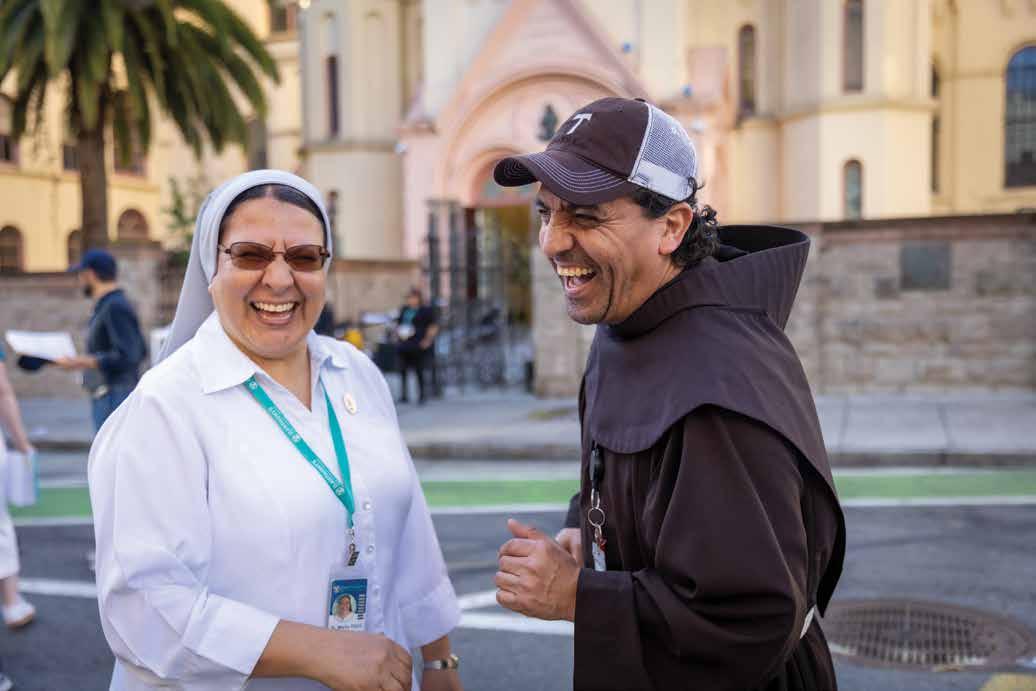





The St. Vincent de Paul Society of San Francisco offers hope and service on a direct person-to-person basis, working to break the cycles of homelessness and domestic violence.
